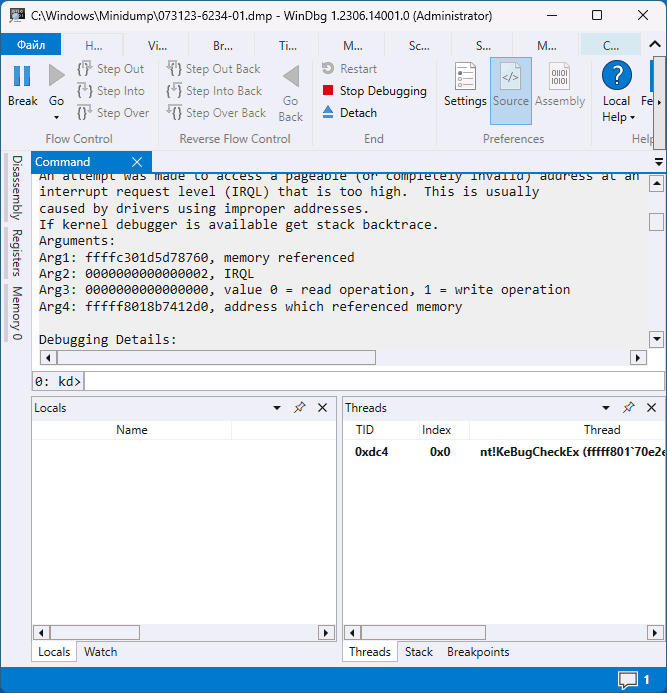Синий экран IRQL NOT LESS OR EQUAL — одна из самых частых ошибок такого типа в Windows 11 и Windows 10, а диагностировать конкретную причину и решить проблему не всегда легко.
В этой инструкции подробно о возможных причинах синего экрана IRQL NOT LESS OR EQUAL и о том, как исправить эту ошибку в различных ситуациях.
Ошибка работы драйвера — самая частая причина ошибки IRQL NOT LESS OR EQUAL

Наиболее частая причина синего экрана с рассматриваемым кодом — ошибка в работе драйвера: из-за несовместимости с оборудованием, неправильного обращения к функциям драйвера (особенно если ошибка возникает лишь в конкретной игре или программе) и в других случаях.
Определение проблемного драйвера
Узнать о том, какой конкретно драйвер вызывает проблему в некоторых случаях просто: на синем экране IRQL NOT LESS OR EQUAL может отображаться имя файла драйвера .sys, которого достаточно для того, чтобы определить, что это за драйвер. Если в вашем случае это имя показывается, вы можете использовать следующие шаги:
- По имени файла драйвера .sys найдите в Интернете, к драйверу какого устройства он относится. Также следует учитывать, что существуют драйверы виртуальных устройств, устанавливаемые сторонними программами, в таком случае вы найдете, к какой программе относится указанный файл драйвера.
- Если вход в систему и работа возможны, попробуйте выполнить установку других версий драйвера этого устройства с официального сайта производителя устройства, материнской платы, ноутбука. Если речь идёт о драйвере видеокарты, используйте опцию «выполнить чистую установку» при её наличии в установщике.
- В случае, если речь идёт о драйвере, устанавливаемом какой-либо программой, можно попробовать удалить эту программу, изучить возможности отключения или настройки её функциональности, использующей этот драйвер, либо попробовать установить другие версии этого ПО.
Однако имя модуля, который вызвал сбой, может и не отображаться, в этом случае вы можете использовать следующий подход.
Анализ дампа памяти
При сбоях IRQL NOT LESS OR EQUAL и аналогичных, Windows по умолчанию автоматически создаёт файлы дампа памяти, которые позволяют проанализировать данные, относящиеся к ошибке с помощью специальных программ. В случае, если работа в Windows возможна, вы можете поступить следующим образом:
- Установите последнюю версию WinDbg, скачать программу можно из Microsoft Store или по прямой ссылке.
- Запустите программу (лучше от имени администратора) и используйте меню Файл — Open Dump File для открытия файла дампа памяти с нужной датой, расположенного в папке C:\Windows\Minidump
- Дождитесь загрузки файла, после чего введите команду (в поле kd> )
!analize -v
или нажмите по ссылке с этой командой в верхней панели WinDbg
- Дождитесь завершения анализа. В результатах вы увидите различные данные, например, значения аргументов сбоя (для рядового пользователя будут мало полезными, прочитать, о чем говорят различные значения аргументов при указанной ошибке, можно на официальной странице)
- Ниже в отчете вы найдете пункты PROCESS_NAME (процесс — источник сбоя) и MODULE_NAME/IMAGE_NAME, позволяющие определить файл драйвера, который вызвал сбой.
С информацией о сбойном файле драйвера далее можно работать так, как это было описано в первой части инструкции.
Если Windows не запускается
Приведенные выше варианты предполагают, что вы можете зайти в Windows 11/10 и выполнять действия в системе. Если это не так, ситуация осложняется, но некоторые действия выполнить можно:
- После нескольких сбоев с невозможностью загрузки ОС должно будет запуститься автоматическое восстановление системы, после которого на экране «Компьютер запущен некорректно» вы увидите кнопку «Дополнительные параметры» — используйте её для входа в среду восстановления.
- В среде восстановления (обычно в разделе Поиск и устранение неисправностей — Дополнительные параметры) вы можете использовать пункт «Параметры загрузки» для последующей попытки загрузки в безопасном режиме (где ряд драйверов отключены и, возможно, синий экран не проявит в себя.
- Там же можно запустить восстановление системы — использовать точки восстановления, которые отменят в том числе и недавние обновления драйверов.
- Ещё одна возможность в среде восстановления — удаление обновлений Windows, если ошибка стала появляться после их установки.
Это базовый вариант действий в случае, если вход в систему невозможен, но не всегда применимый: например, возможны ситуации, когда среда восстановления недоступна. Некоторые возможные решения для этого сценария описаны в следующем разделе.
В завершение — дополнительная информация, которая может оказаться полезной в контексте исправления ошибки IRQL NOT LESS OR EQUAL.
- Если ошибка возникает только при запуске или работе какой-то конкретной программы или игры и не исчезает при обновлении или откате сбойного драйвера, возможно, причина в самой программе и особенностях её работы с драйвером, а в случае нелицензионного ПО причиной также может оказаться антивирус.
- В случае, если ошибка появилась недавно после каких-то обновлений драйверов или системы, обязательно попробуйте использовать точки восстановления системы, это можно сделать, в том числе и на системе, которая не запускается, например, используя WinPE.
- Ошибка может быть вызвана проблемами в работе оперативной памяти: попробуйте отключить её разгон (если включен), выполнить проверку оперативной памяти на ошибки, проверить, проявляет ли себя сбой, если оставлять подключенным один модуль оперативной памяти (если ошибка появляется — заменить его на второй).
- Если ошибка появляется после завершения работы компьютера и включения, но исчезает после перезагрузки, попробуйте отключить быстрый запуск Windows.
- Выполните восстановление хранилища компонентов Windows и восстановление системных файлов (инструкции для Windows 11, но подойдут и для Windows 10).
- Проверьте, появляется ли ошибка, если использовать чистую загрузку Windows — если это решило проблему, искать причину следует в сторонних службах и программах автозагрузки.
И, наконец, если разобраться с синим экраном IRQL NOT LESS OR EQUAL самостоятельно не удается, опишите ситуацию в комментариях: при каких условиях возникает ошибка, есть ли какие-то закономерности её появления, о чем говорят отчеты WinDbg или других программ для анализа дампов памяти — возможно, мне удастся вам помочь.
The “IRQL_NOT_LESS_OR_EQUAL” error in Windows 10, identified by the stop code 0x0000000A, typically occurs due to hardware, driver, or system file corruption issues. The error means that a kernel-mode driver attempted to access a memory address that it shouldn’t have. Here’s how to fix this issue using the 17 methods listed below.
Reasons for Driver irql_less_or_not_equal Error
Although there are many unidentified reasons for this error, we have compiled a list of common reasons.
- Damaged System Files: System file corruption can occur due to virus attacks or malware infections affecting Windows system files or related program files.
- Incompatible Drivers: Installing new hardware may lead to driver conflicts with existing drivers, causing a BSOD.
- Overheated CPU: If the CPU exceeds a certain temperature, the system may shut down abruptly with a BSOD to prevent damage.
- Windows Updates or Downgrades: Installing updates or downgrades may improperly replace system files and create conflicts between different Windows versions.
- Hardware Issues: Problems with hardware components, such as a damaged motherboard or RAM, can trigger BSODs.
- Corrupted Registry: Recent software installations or uninstallations might corrupt the Windows registry.
How To Fix Driver irql_less_or_not_equal Blue Screen Error
Try each step individually and check if the issue has been resolved after each step. This way, you can ignore the remaining steps after resolving the issue. Let us begin troubleshooting the error without further ado.
Method 1: Disconnect External Devices And Restart Windows
The first step is to remove all external devices except the mouse and keyboard. After disconnecting all other peripherals, external storage, and devices, reboot your PC. If the PC restarts without any issue and you do not get this error again, then you have to attach the external devices one by one and identify which external device causes the error.
Method 2: Keep Your PC Cool
Some experts have suggested that extreme temperature causes PC issues like Blue Screen errors, including the “driver irql not less or equal” error. Ensure the CPU is in a well-ventilated area and the inbuilt fans are working properly.
Method 3: Scan For Malware
Tech reports state that Malware is responsible for 50% of the issues on your PC. A “Driver irql_less_or_not_equal” blue screen error can occur due to malware infection. In this case, we recommend you run a malware scan using the antivirus software you prefer and ensure the system is malware-free. If you are using Windows Security software, here are the steps:
Step 1: Press the Windows key and type “Windows Security”.

Step 2: Click the relevant result under Best Match to launch the Windows Security box.
Step 3: Click on Virus & Threat Protection.
Step 4: Next, click Scan Options and choose the Full Scan option.

Step 5: Finally, click the Scan Now button and wait for the app to scan your PC.
Read Also: Are Windows Defender Security Warning Alerts Fake? – It May be a Virus!
Method 4: Check For Windows Updates
Microsoft Provides regular updates to all genuine Windows 11 users. You can check for new updates by following these steps:
Step 1: Press the Win key, type “Check For Updates,” and click on the relevant result.
Step 2: Click the “Check For Updates” button in the settings window.
Step 3: After the updates have been completed, reboot the PC.
Method 5: Check For Driver Updates
Drivers play an important role in the smooth running of the system and maintaining harmony between hardware and software. In this case, the culprit is the graphics driver, which can be updated in three different ways.
Read Also : [Solved] – GPU Crashes But PC Stays On
Update Via OEM Website
All manufacturers maintain an official website that provides drivers and other resources related to their hardware. Visit the website, enter your model number, and download the drivers compatible with your hardware.
Update Via Device Manager
Open the Device Manager utility by pressing Win + X and choosing Device Manager from the Power menu. Once opened, click on Display Adapters to reveal your graphics card, then right-click and select Update Drivers.
Update Via Advanced Driver Updater
Advanced Driver Updater is a third-party driver updater software that will help users update all the drivers on their PC without any hassles using a few mouse clicks. Here are the steps:

Method 6: Uninstall the Problematic app
The Driver irql_less_or_not_equal blue screen error can also occur due to a particular app conflicting with your operating system. Here are two ways to fix this:
- If this error occurs when you launch a particular app, you must uninstall it immediately.
- If the error occurs randomly, go to the list of apps installed in your system and look for unknown recently installed apps. Remove them as soon as possible.
Here are the steps to remove an app from your system.
Step 1: Press the Windows key and type “add remove program.”
Step 2: Click on the Best Match result.
Step 3: The Settings window will open, listing all the apps installed on your PC.
Step 4: If you know the name of the app you wish to remove, use the search bar at the top to type the name of the app.
Step 5: Otherwise, you can use the drop-down filters at the top right, and in the Sort By option, choose “Date Installed.” The most recently installed app will appear at the top.

Step 6: Click on the three dots next to any app you wish to remove and choose Uninstall.

Step 7: Follow the onscreen instructions, and the app will be removed.
Step 8: Restart your computer to remove any pending uninstallation files.
Method 7: Run Hardware Troubleshooter
The hardware troubleshooter is a useful inbuilt utility provided by Microsoft that checks for faults within the system. Here is how to use it.
Step 1: Open the Run box and type the following command:
msdt.exe -id DeviceDiagnostic
Step 2: A new box will open, and you must click on the Advanced link. Ensure that the checkbox before “ Apply Repairs Automatically “ is checked.

Step 3: Click on the Next button and follow the onscreen steps.
Step 4: Reboot the PC for the changes to take effect.
Method 8: Use System File Checker Utility
The SFC tool is a built-in tool that scans your PC’s files detects issues, and fixes them. Here are the steps:
Step 1: Press Win + S to open the search box, type “cmd,” right-click on “Command Prompt” from the search results, and select “Run as administrator.”
Step 2: If the prompt box for administrative privileges appears, click “Yes” to proceed.
Step 3: In the Command Prompt window, type “sfc /scannow” and press the Enter key.
Step 4: After completing the scan, exit the Command Prompt window and reboot your computer.
Method 9: Utilize Deployment Image Servicing And Management Tool
There is another tool that helps to fix internal issues called the DISM. This tool can fix many issues, and here is what you need to do:
Step 1: Press Windows + S, type cmd, right-click Command Prompt, and select Run as administrator.
Step 2: In the Command Prompt window, type the following command and press Enter
DISM /Online /Cleanup-Image /RestoreHealth
Step 3: Allow the process to complete and reboot your PC.
Method 10: Run Chkdsk
Most users who experience this error code have reported that it is due to disk errors or a faulty hard disk. The easiest way to diagnose and fix hard disk issues is by using the Check Disk tool in Windows. Follow these steps:
Step 1: Press Win + R to open the RUN box.
Step 2: Type CMD and press Ctrl + Shift + Enter to open Command Prompt in elevated mode.
Step 3: If you get the User Account Control Prompt box, click Yes.

Step 4: Copy and paste the following command.
chkdsk /f /r
Step 5: Reboot your PC.
Method 11: Run Memory Test
A memory test in Windows checks your computer’s RAM for errors that could cause system instability or crashes. To run a memory test, use the Windows Memory Diagnostic tool:
Step 1: Press Win + R to launch the RUN box.
Step 2: Type “mdsched.exe” and hit the Enter key.
Step 3: A new box will appear where you must click the “Restart now and check for problems (recommended)” option.

Windows will automatically perform a diagnostic, which may take several minutes. After it finishes, your PC will restart, displaying the results on your desktop.
Method 12: Run Driver Verifier
Running the Driver Verifier can also address the IRQL_NOT_LESS_OR_EQUAL error, though this method is better suited for advanced users.
Step 1: Type cmd in the search box, select the best match, right-click on it, and choose Run as administrator to proceed.
Step 2: Type “verifier” in the Command Prompt window followed by the Enter key.

Step 3: Select Create standard settings and click on the Next button.

Step 4: Please choose the “ Automatically Select All Drivers Installed …” option.

Step 5: Click the Next button and wait for the process to complete.
Step 6: Reboot your PC to complete the Driver Verification process.
Method 13: Check Storage Health; Consider Replacing OS Drive
If the SSD where your Windows 11/10 operating system is installed becomes faulty, it can cause instability and result in a BSOD error. Here’s how to check the health of your storage on Windows 10.
Step 1: Press Win + R to open the Run dialog. Type “CMD” and click OK.
Step 2: When the CMD window opens, copy and paste the command below, then press Enter.
wmic diskdrive get status, model
Step 3: Your drive’s status will be displayed, as shown below. If it says ‘OK,’ your drive should be in good condition.

Step 4: If your SSD or HDD does not appear to be in good condition, consider replacing the drive and reinstalling the operating system.
Method 14: Disable Third-Party Services
After using Windows 10/11 for an extended period, various services may be scheduled to start automatically when you boot your PC. These can sometimes cause problems. To address this, we will disable third-party services and ensure that Windows only loads essential system services. Here’s how to do it:
Step 1: Press Win + R to open the Run dialog. Type “msconfig” and click OK.
Step 2: Next, navigate to the ‘Services’ tab.
Step 3: Check the box for ‘Hide all Microsoft services’ to ensure these services are hidden. Then, click ‘Disable All’.

Step 4: Click ‘OK’ when finished and restart your system to apply the changes.
Method 15: Disable on-board graphics
Step 1: Restart your computer and enter BIOS/UEFI settings. This is usually done by pressing a key such as F2, Del, Esc, or F10 during the startup process (refer to your motherboard’s manual if needed).
Step 2: Look for settings related to graphics or display. This might be under sections like Advanced, Chipset Configuration, or Integrated Peripherals.
Step 3: Locate the option for Primary Display or IGD (Integrated Graphics Device) and set it to Disabled or select the dedicated graphics card as the primary display adapter.
Step 4: Save your changes and exit BIOS/UEFI. Your computer will restart.
Method 16: System Restore
A system restore will revert your PC to a previous state where everything functions correctly without losing your files. However, you will lose any applications installed after the restore point and any settings changes made since then. Here’s how to perform a system restore:
Step 1. Reboot your PC into the Windows Recovery Environment and select Troubleshoot.
Step 2. Choose “Advanced options” and then “System Restore”.

Step 3. Select your Administrator Account, enter your password, and click “Continue”.
Step 4. Choose the system restore point you created and follow the on-screen instructions to complete the process.
Read Also: How to Fix Windows 10/11 System Restore Is Taking a Long Time
Method 17: Reset This PC
If the previous solutions haven’t worked, resetting Windows may be the final step to fix the “driver irql not less or equal” error. Here’s how to reset Windows 10 and 11:
Step 1. Open the Start menu and search for ‘Reset this PC.’ Then, select the appropriate option from the search results.

Step 2. Click on “Reset PC.”

Step 3. Select “Keep my files.”

Step 4: Follow the on-screen instructions to start the reset process for your Windows computer.
Note: Although Windows provides an option to keep your data during the reset, it is recommended to manually back up your files externally to prevent any potential data loss.
Have You Fixed The “Driver irql_less_or_not_equal” Error On Windows 10?
We hope that you have fixed the Driver irql_less_or_not_equal blue screen error on your Windows 10 PC with the above-recommended steps. Please tell us in the comments section below which method helped you fix the issue and what you think caused it.
DRIVER IRQL NOT LESS OR EQUAL — одна из самых распространенных ошибок в Windows, обычно возникающая в виде «синего экрана смерти». В чем причины ее появления, и как решить проблему? Разбираемся в данном материале.
Сам текст сообщения содержит подсказку, правда понятную только знающим людям и администраторам. Чтобы выяснить природу проблемы, необходимо расшифровать код, поделив его на три составляющие:
- DRIVER — ошибка затрагивает драйвер, возможно и не один. Чаще всего проблема кроется именно здесь;
- IRQL — система прерывает запрос или неправильно рассматривает приоритеты. Устройство ошибочно ставит высокие приоритеты на разные драйверы или занижает их;
- NOT LESS OR EQUAL — «не меньше или равно». Здесь подразумевается, что уровень приоритета драйвера сравнялся с другим, процесс которого он прерывает. Здесь стоит знать о правиле — ниже уровень, выше приоритет.
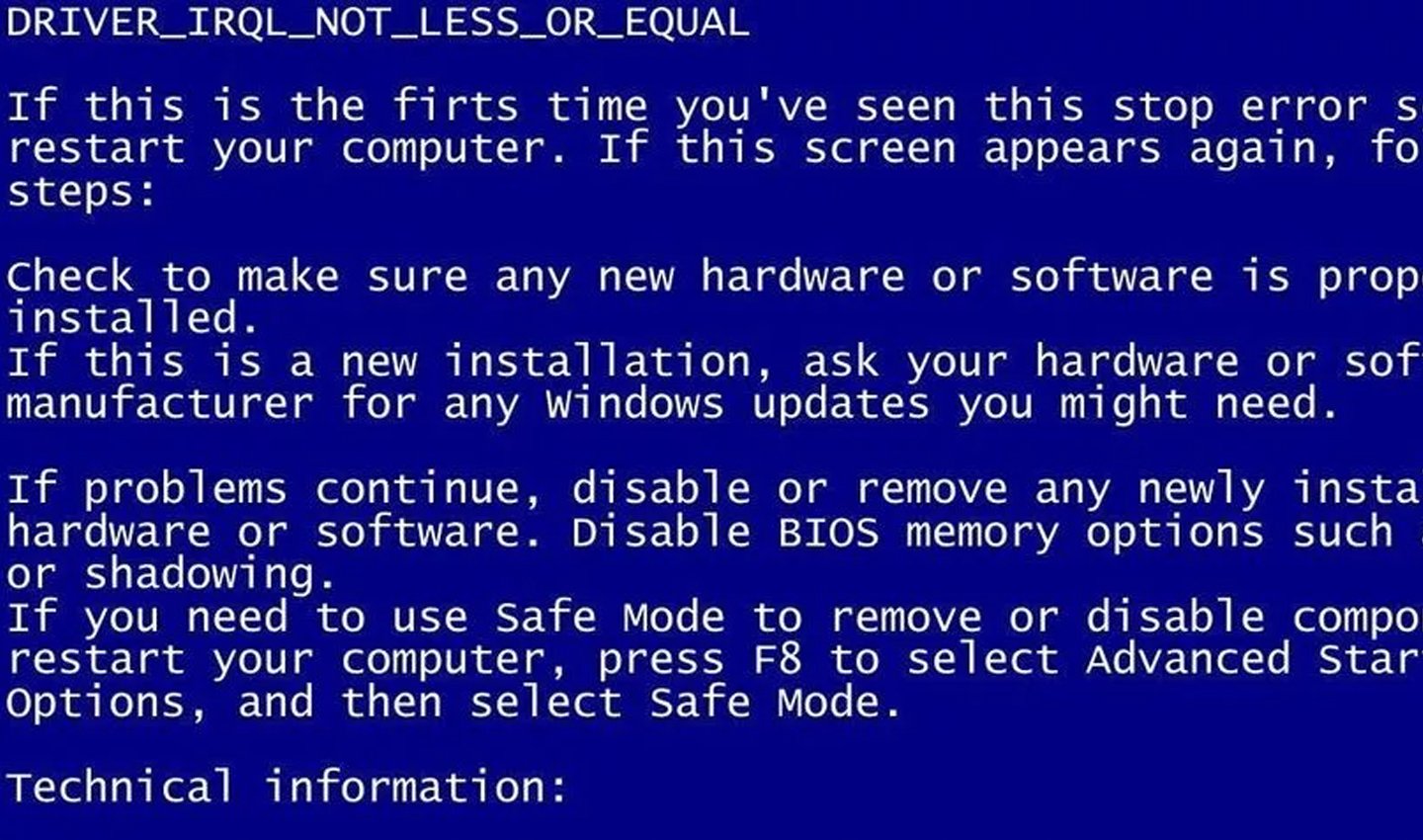
Источник: Safereactor / Ошибка DRIVER IRQL NOT LESS OR EQUAL
Причины появления ошибки DRIVER IRQL NOT LESS OR EQUAL
Проблема носит комплексный характер. Один процесс не спровоцирует этот код остановки, он возникает под влиянием общего сбоя в оборудовании. Для идеального решения проблемы потребуется рассмотреть все возможные варианты.
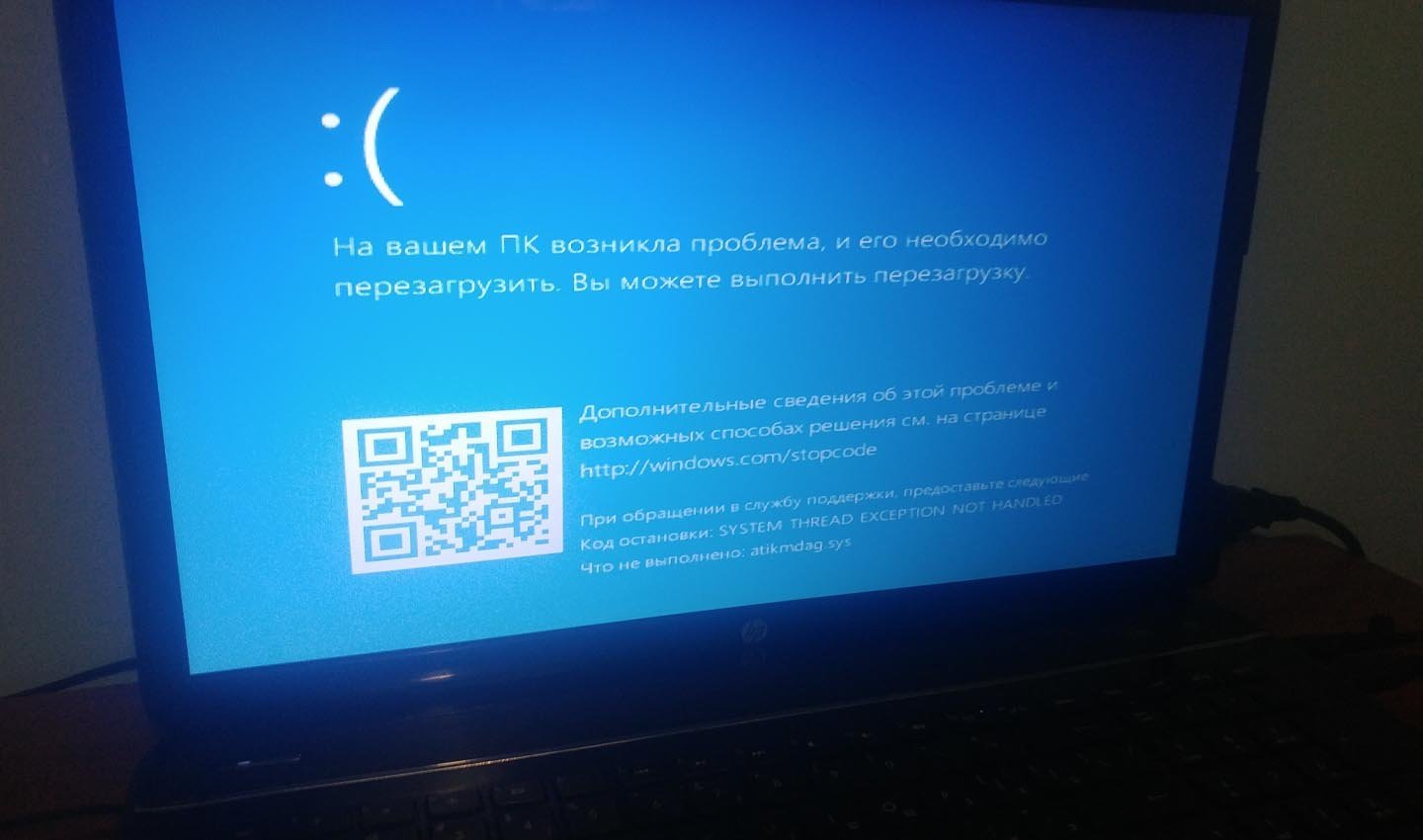
Источник: Otvet.mail / Ошибка в установке драйверов
Ниже приведены наиболее распространенные и часто встречающиеся причины:
- Несовместимые драйверы. Возникает после установки нового аппаратного устройства;
- Вышедшее из строя оборудование. Может означать повреждение «материнки» или оперативки;
- Влияние вируса. Большинство вредоносных приложений комплексно наносят вред системе. Вполне возможно, что часть программных файлов Windows повреждены, или вовсе отсутствуют;
- Неисправный реестр. Если проблема возникла после обновления ПО, значит изменения затронули реестр;
- Частичная установка драйвера. Если процесс был прерван на середине, то программное обеспечение не будет функционировать должным образом, или даже навредит системе.
Как исправить ошибку DRIVER IRQL NOT LESS OR EQUAL
Так как проблема комплексная, потребуется несколько решений для полной починки системы. Для этого нужно рассмотреть доступные варианты, выбрать наиболее подходящие к вашему случаю, а еще лучше испробовать все поочередно, чтобы вернуть системе работоспособность.
Запуск Windows 10 в безопасном режиме
Безопасный режим позволяет функционировать системе с минимальным количеством задействованных функций и процессов. Если причина кроется в стороннем софте или драйвере, данный режим не допустит повторного сбоя. Для его активации действуем так:
- Перейдите в «Пуск», выберите «Параметры»;
- Найдите иконку «Обновление и безопасность»;
- Отыщите раздел «Восстановление», кликните на «Перезагрузить сейчас»;
- Далее поочередно выбирайте «Поиск и устранение неисправностей» — «Дополнительные параметры» — «Параметры загрузки»;
- Если последний блок отсутствует, выберите «Просмотреть другие параметры восстановления», он находится там;
- Кликните «Перезагрузить»;
- Далее появится окно с разными видами загрузки. Чтобы перейти в безопасный Режим, нужно нажать клавишу 4 или же F4.
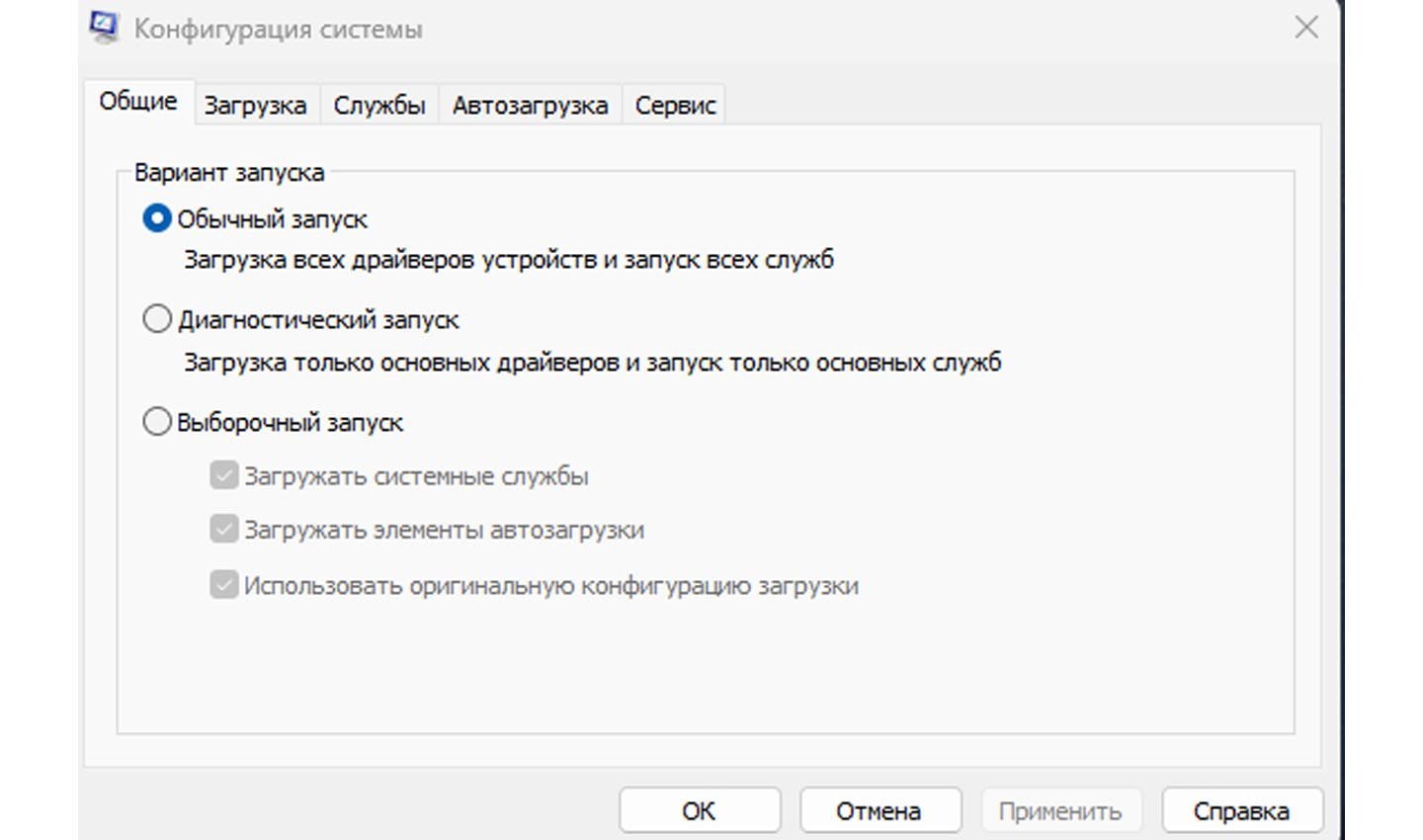
Источник: CQ / Запуск Windows 10 в безопасном режиме
По завершении нужно перезагрузить устройство. Если проблема исчезла, значит причина крылась в стороннем софте.
Проверка диска на наличие ошибок
Проблема часто возникает из-за поврежденных системных файлов. Чтобы узнать наверняка, необходимо проверить жесткий диск, следуя инструкции ниже:
- Зайдите в «Пуск», в поле поиска введите «Командная строка»;
- Нажмите ПКМ и запустите ее от имени администратора;
- Там введите команду chkdsk C:/f и нажмите Enter. При необходимости замените название раздела на соответствующую букву.
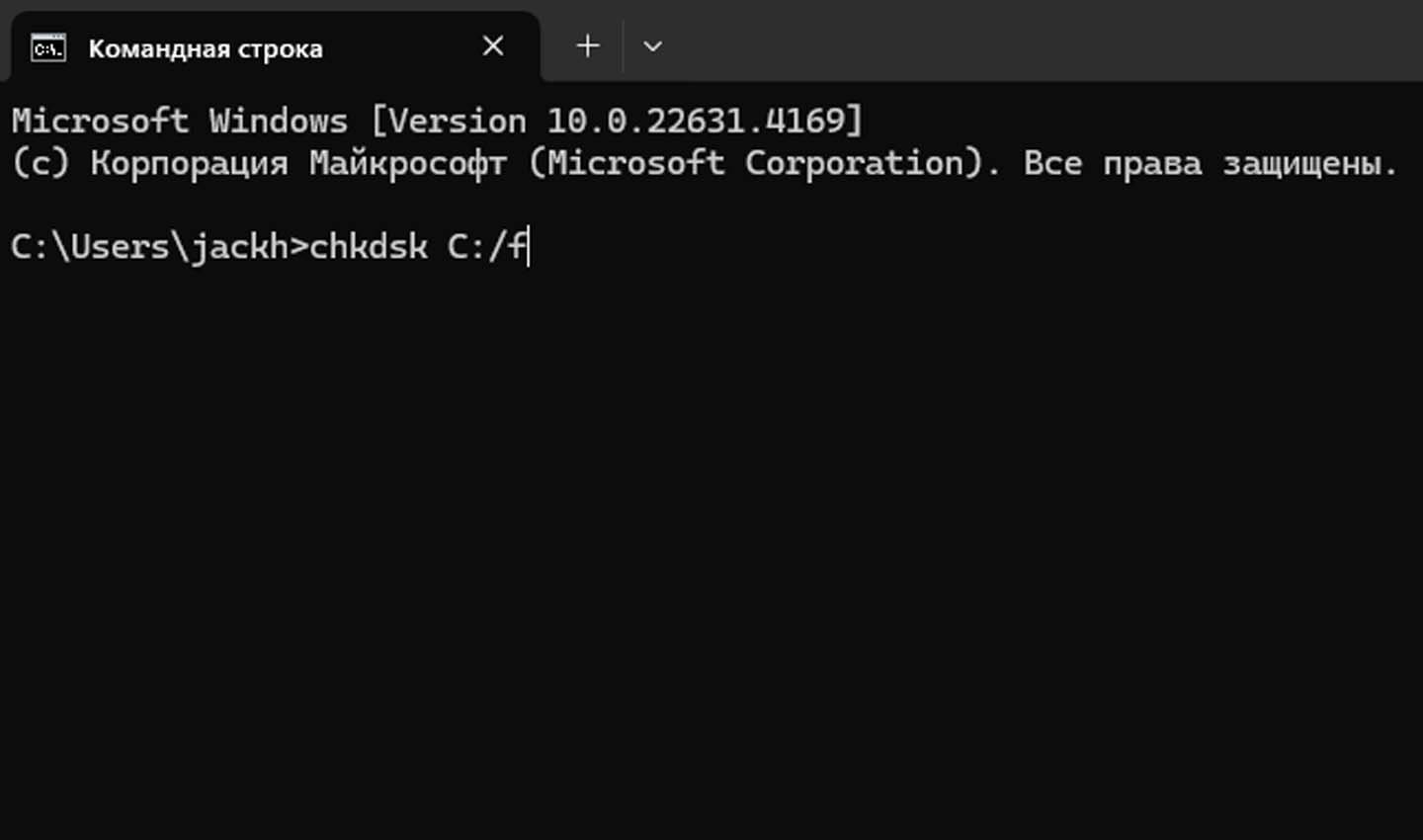
Источник: CQ / Проверка диска на наличие ошибок с помощью командной строки
Дождитесь завершения процесса и перезагрузите ПК.
Проверка памяти и оборудования
Если причина кроется не в ПО, то дело может заключаться в аппаратном сбое. Для изучения ситуации необходимо провести тестирование оперативной памяти ПК. В системе есть специальный инструмент на такой случай — Memory Diagnostic. Чтобы воспользоваться им, сделайте следующее:
- Откройте «Пуск», вбейте в поисковую строку «Диагностика памяти»;
- Откройте утилиту, выберите пункт «Перезагрузить сейчас и проверить наличие проблем». Запустится процесс сканирования.

Источник: CQ / Проверка памяти в Windows
Если в результате сканирования происходит ошибка, значит источник проблемы найден. В подобной ситуации рекомендуется произвести замену оперативки, чтобы восстановить работоспособность.
Обновление или восстановление
Иногда ошибка выскакивает после внесения новых настроек. Здесь лучше не испытывать прочность системы, а откатить все изменения или обновить ОС, при наличии новой версии. Откат, он же восстановление, не приводит к утрате личных файлов и данных, а возвращает компьютер в состояние 12 и более часов назад. Обновить ПК легко — необходимо перейти в «Пуск», открыть «Параметры», найти раздел «Обновления и безопасность» и проверить наличие таковых.
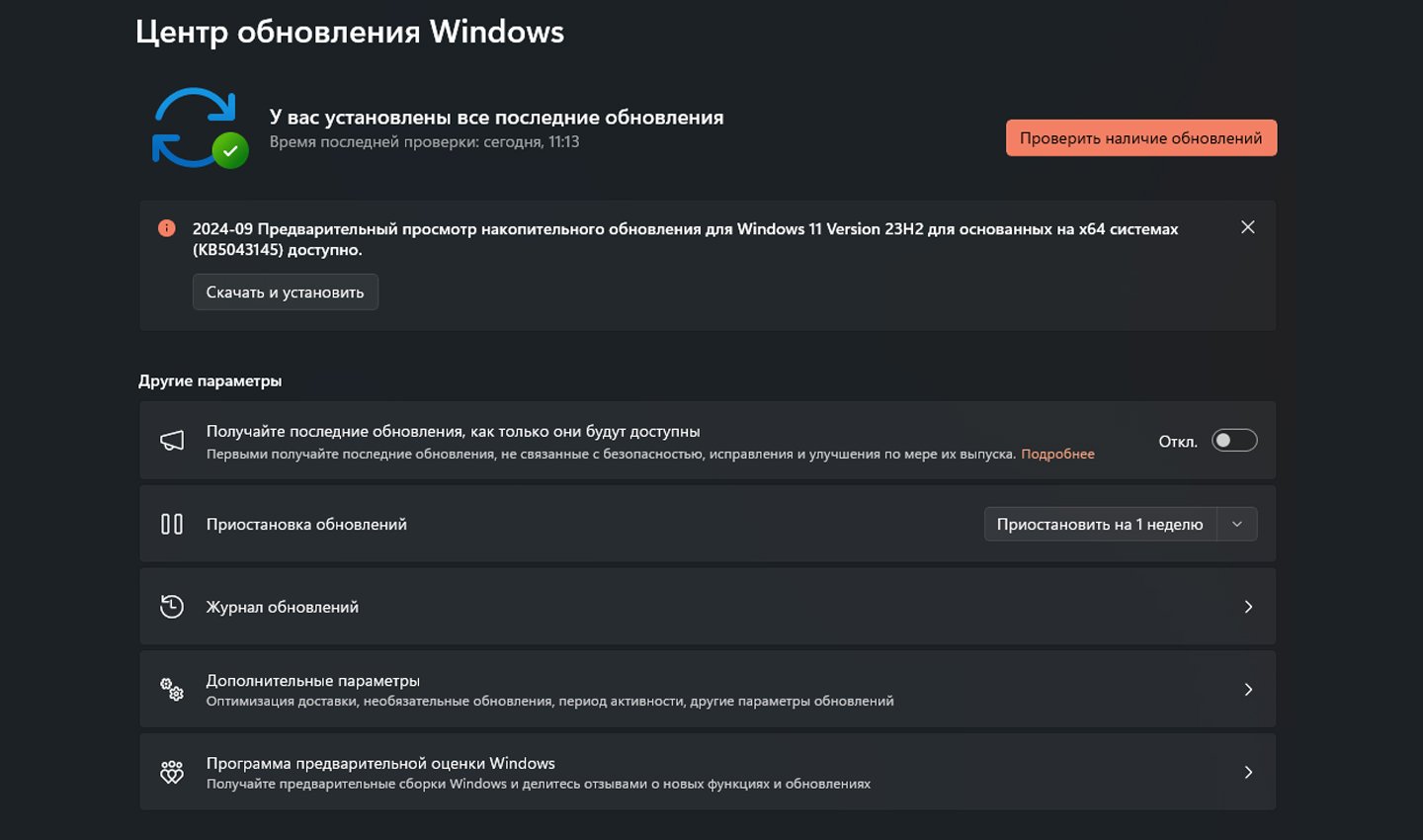
Источник: CQ / Обновление Windows
Если же они отсутствуют, значит переходим к восстановлению:
- Зайдите в «Пуск», найдите через поисковую строку «Восстановление системы»;
- После перехода в раздел выберите «Создать точку восстановления»;
- Вы перейдете в следующее окно. Там нужно нажать «Защита системы» и «Восстановление системы»;
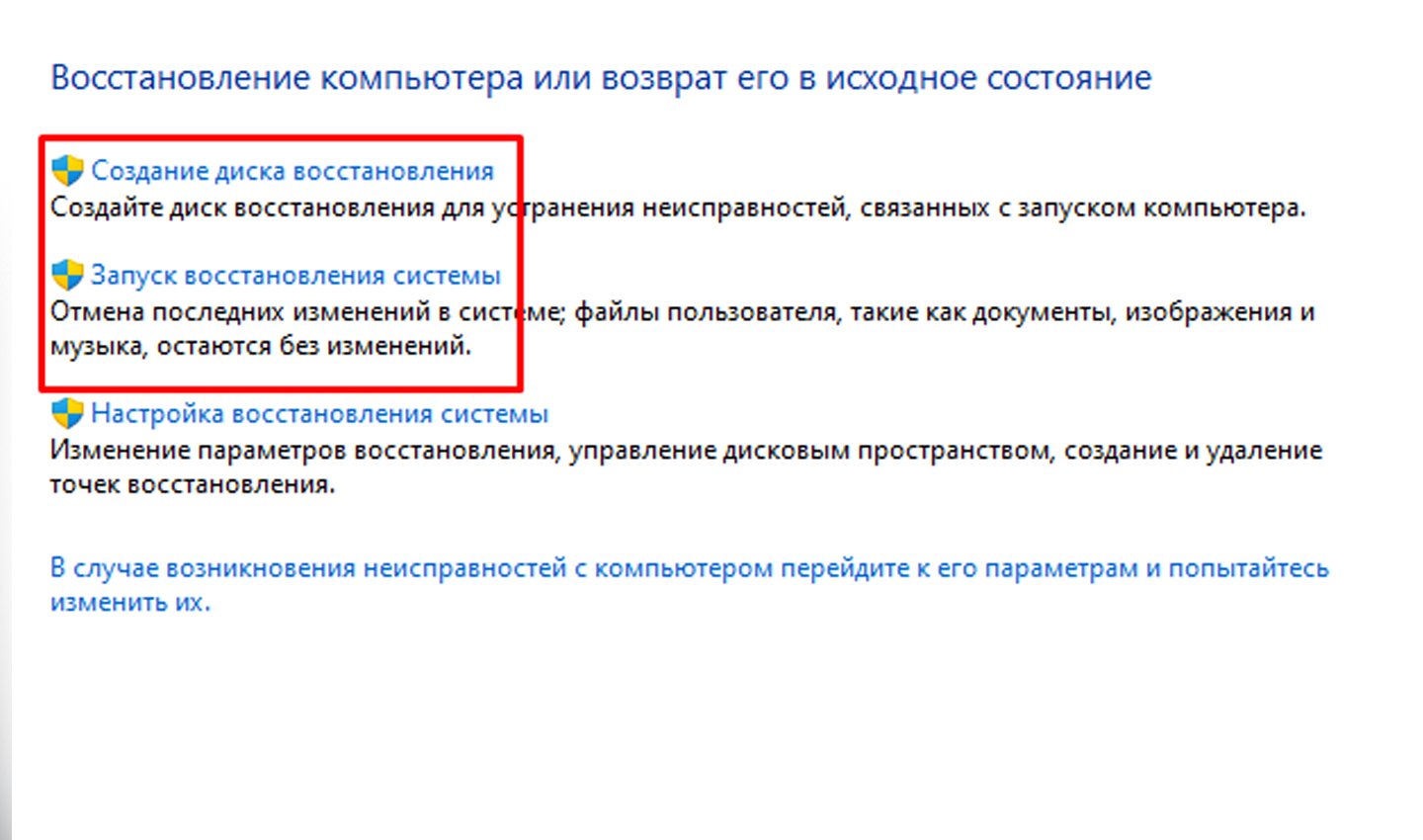
Источник: CQ / Востановление Windows
- Ознакомьтесь с инструкцией на экране и кликните на «Далее»;
- Поставьте флажок в пункте «Показать больше точек восстановления», выберите временной отрезок до установки новых настроек. Жмите «Далее»;
- Проследуйте всем рекомендациям до конца и восстановите систему. По завершении нужно перезагрузить устройство.
Запуск диагностики оборудования
Аппаратный сбой, вызвавший ошибку, может быть причиной всплывающего окошка с уведомлением DRIVER IRQL NOT LESS OR EQUAL. Чтобы удостовериться в этом, нужно воспользоваться еще одним специальным системным инструментом — диагностикой оборудования.
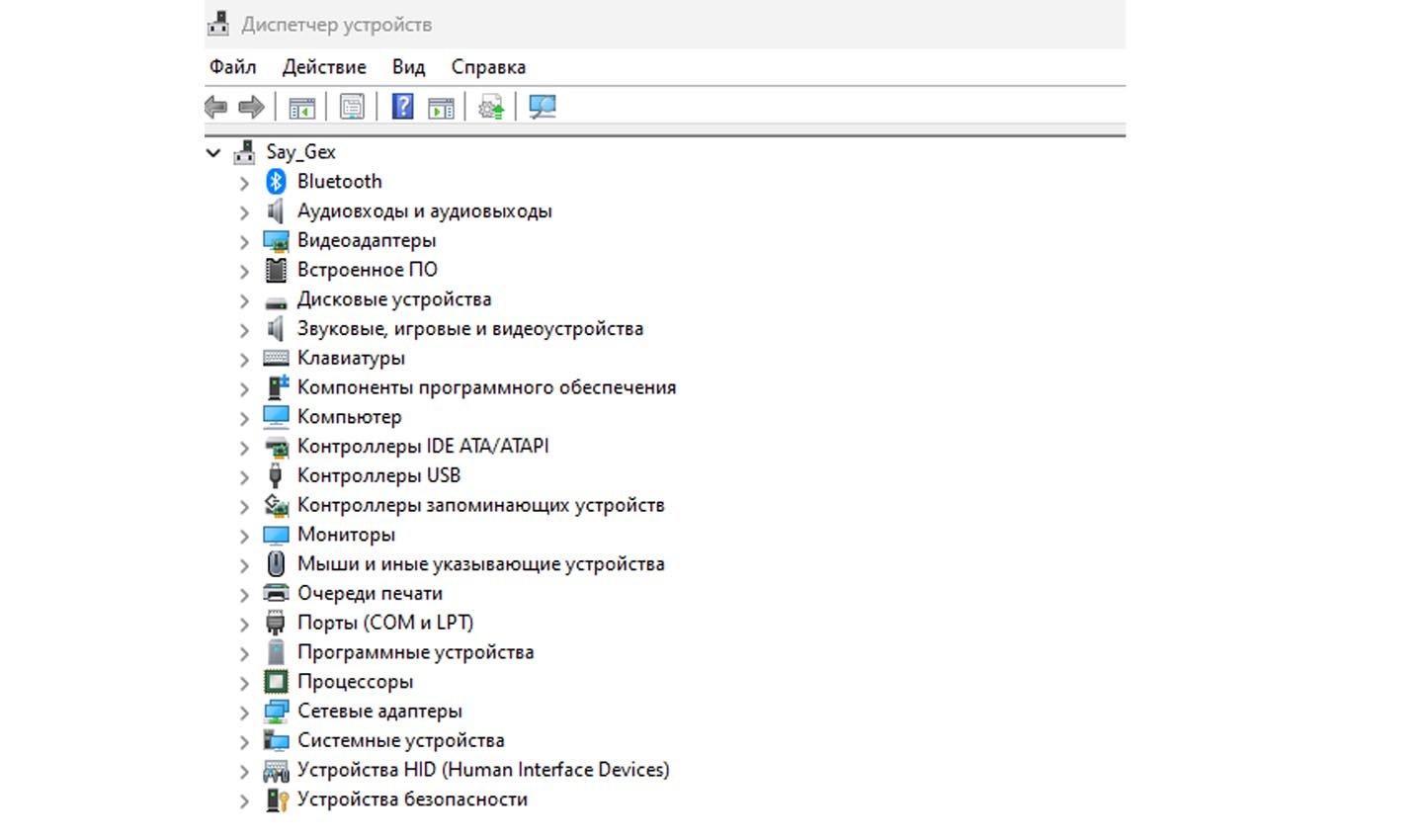
Источник: CQ / Диагностика оборудования в Windows
Делается это так:
- Открываете «Пуск», переходите в «Настройки»;
- Жмете на «Обновление и безопасность»;
- Там находите раздел «Устранение неполадок», выбираете «Оборудование и устройства» в колонке справа;
- Далее останется только запустить инструмент и дождаться окончания сканирования.
При условии, что проблема именно аппаратная, программа покажет ее. Если дефекты не обнаружены, значит придется искать причину дальше.
Отключение кэширования памяти
В десятой Windows есть функция кэширования памяти, чтобы хранить все данные в ОЗУ компьютера. Преимущество такого решения в возможности получить быстрый доступ к важной или потерянной информации. При этом опция может даже остановить рассматриваемую ошибку.
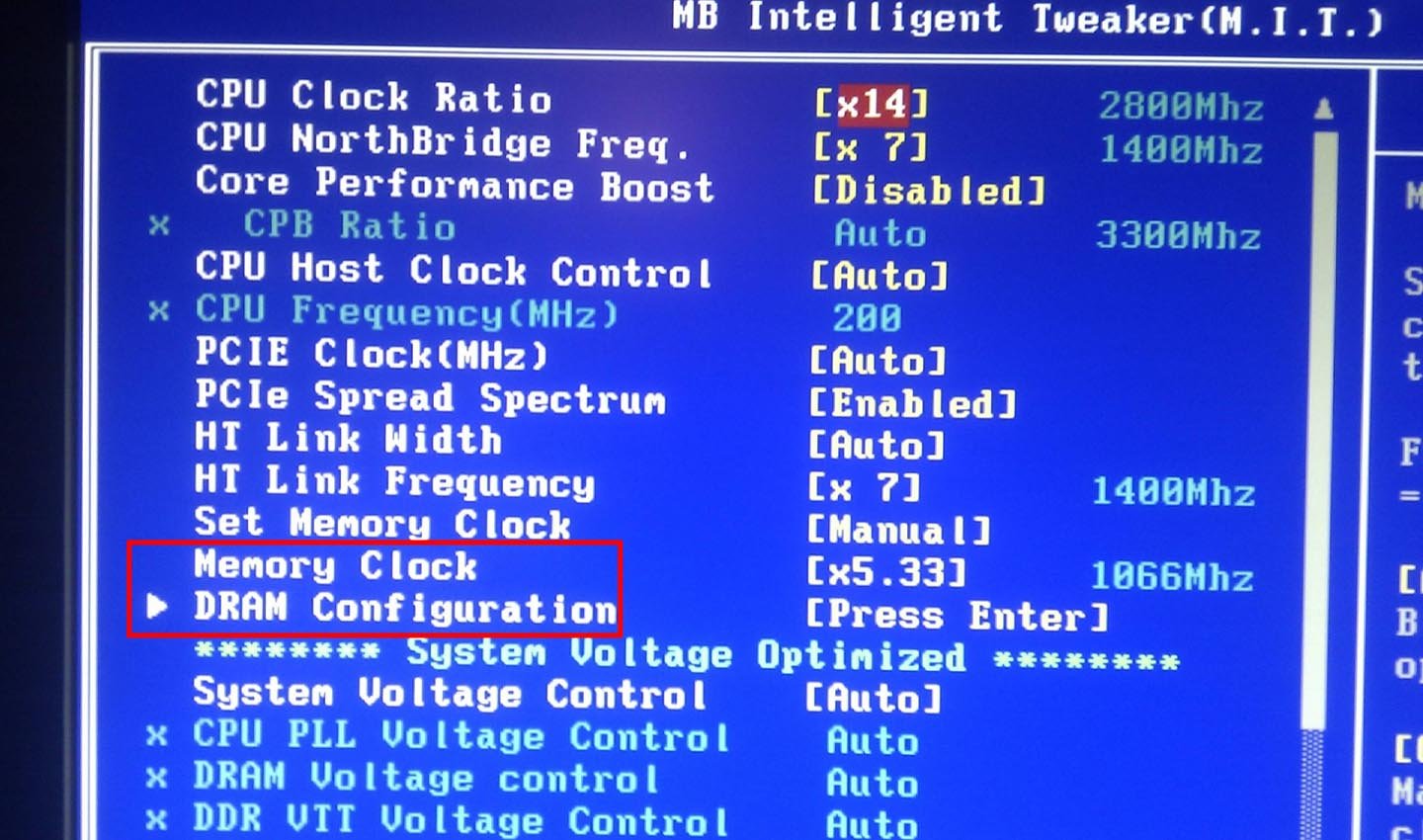
Источник: Overclock / Отключение кэширования памяти в BIOS
Для этого следуем инструкции ниже:
- Перезагрузите устройство, нажмите на клавишу F1, F5, F8, Esc или Del во время включения загрузочного экрана, чтобы открыть BIOS;
- Выберите дополнительные настройки в меню;
- Нажмите Enter для входа в них;
- Там отыщите две опции — Shadowing и Cacheable RAM и нажмите на каждой Enter. Переведите их в неактивное состояние — disable;
- По завершении выйдите из раздела, нажав кнопку Esc, и нажмите клавишу Y, чтобы сохранить изменения.
Восстановление реестра
Перед началом процесса рекомендуется создать резервную копию реестра. Так удастся избежать фатальных изменений в случае, если системе будет нанесен значительный ущерб.
По готовности действуйте следующим образом:
- Перейдите в «Пуск», найдите через поиск «Командную строку», запустите ее от имени администратора;
- В открывшемся окне нужно написать команду SFC/scannow и нажать Enter. Тогда будут восстановлены поврежденные файлы.
- По завершении обязательно перезагрузите ПК и проверьте, как повлияли изменения на работу системы.
Переустановка Windows
Если все предыдущие решения были испробованы, а ошибка DRIVER IRQL NOT LESS OR EQUAL сохраняется при запуске ПК или возникает в качестве уведомления, значит какая-то из возможных причин не была найдена. Здесь остается только один вариант — выполнить переустановку системы.
Мера кардинальная, но помогает решить проблему в преимущественном числе случаев. Рекомендуется ставить чистую Windows, не сборку, иначе можно спровоцировать новые ошибки.
Если же даже после переустановки системы проблема не пропала, значит поломка носит механический характер — сбоит какая-то из составляющих, но ОС расценивает ее состояние как «удовлетворительное» и не сообщает об ошибке. Здесь остается только одно — обратиться к специалисту для диагностики комплектующих.
Заглавное фото: Ipvanish
How to Fix the IRQL_NOT_LESS_OR_EQUAL Error in Windows 10
IRQL_NOT_LESS_OR_EQUAL is a Blue Screen of Death (BSoD) error that occurs when your PC experiences a critical error from which it cannot recover. This article provides methods to fix the underlying issues causing this error.
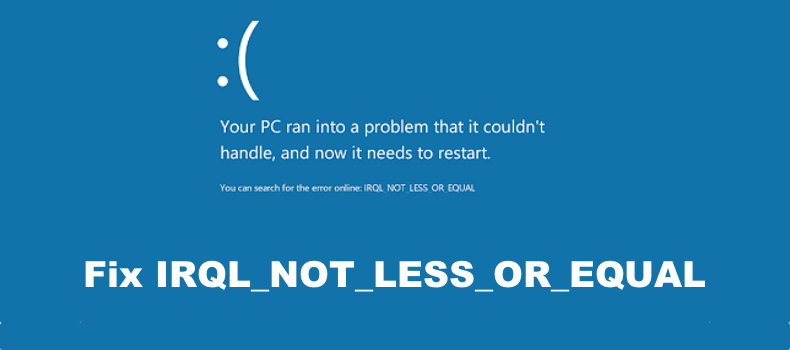
IRQL_NOT_LESS_OR_EQUAL refers to an Interruption ReQuest Line (IRQL) that is used to signal events that require attention or response.
What Is IRQL_NOT_LESS_OR_EQUAL
IRQL_NOT_LESS_OR_EQUAL indicates that Windows 10 or a kernel-mode driver accessed paged memory at an invalid address while at a raised interrupt request level (IRQL). In other words, this error occurs when a system process or device driver does not have the required rights to access memory.
This error is triggered by kernel-mode device drivers that use improper addresses. The driver may have a bad memory pointer or a pagebility problem.
What Causes This Error
- Corrupt system files. To fix corrupted system files, run SFC and DISM scans.
- Incompatible device drivers. If the IRQL_NOT_LESS_OR_EQUAL started occurring after updating a driver, try rolling it back or uninstalling it.
- Graphics card drivers. Buggy graphics card drivers, particularly Nvidia GeForce graphics drivers are known to cause this error. Updating the drivers should fix the error.
- Faulty hardware. You can check if a device is malfunctioning, you can see error reports in Reliability Monitor. Disconnect the faulty device and see if that fixes the error. This error often occurs due to bad or overclocked (Random-access memory) RAM.
- Damaged/incomplete software or update installation. Use Reliability Monitor to check for installation failure messages. Uninstall or reinstall the software.
In addition, RQL_NOT_LESS_OR_EQUAL can occur due to an overheating or overclocked CPU. Therefore, check for cooling issues and downclock the CPU and see if that fixes this error.
Video Guide on How to Fix the IRQL_NOT_LESS_OR_EQUAL Error
Table of Contents:
- Introduction
- Solution 1. Run the Reliability Monitor
- Solution 2. Run the Windows Memory Diagnostic
- Solution 3. Run the Hardware and Devices Troubleshooter
- Solution 4. Roll Back, Update or Uninstall Device Drivers
- Solution 5. Run CHKDSK Scan
- Solution 6. Run the Deployment Image & Servicing Management (DISM) Scan
- Solution 7. Run the System File Checker (SFC) Scan
- Video Guide on How to Fix the IRQL_NOT_LESS_OR_EQUAL Error
Download Computer Malware Repair Tool
It is recommended to run a free scan with Combo Cleaner — a tool to detect viruses and malware on your device. You will need to purchase the full version to remove infections. Free trial available. Combo Cleaner is owned and operated by Rcs Lt, the parent company of PCRisk.com read more.
Solution 1. Run the Reliability Monitor
1. Hold down Windows+R keys to open Run.
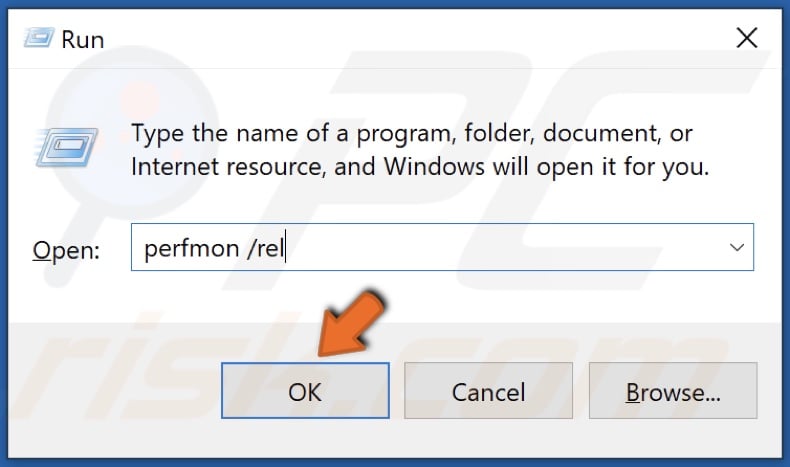
2. In the Run dialog box, type in perfmon /rel and click OK.
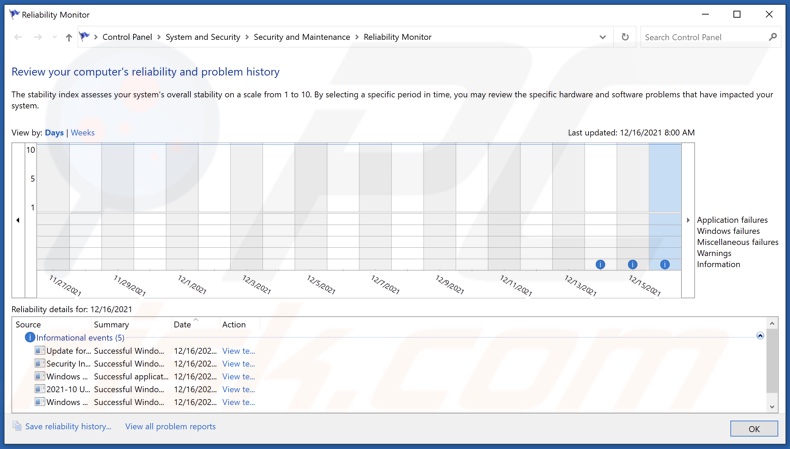
3. Once in the Reliability Monitor, look for software and driver installation and hardware failure messages to determine the cause for IRQL_NOT_LESS_OR_EQUAL.
4. You may fix this error by reinstalling the problematic software or removing or replacing the faulty hardware.
[Back to Table of Contents]
Solution 2. Run the Windows Memory Diagnostic
1. Hold down Windows+R keys to open Run.
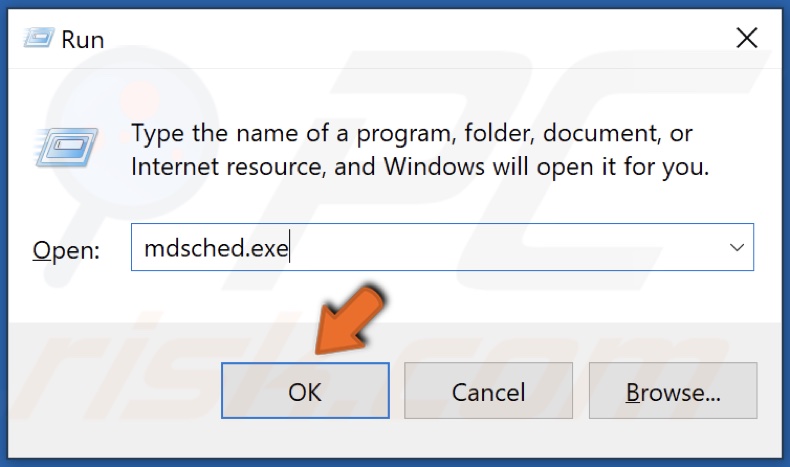
2. In the Run dialog box, type in mdsched.exe and click OK.
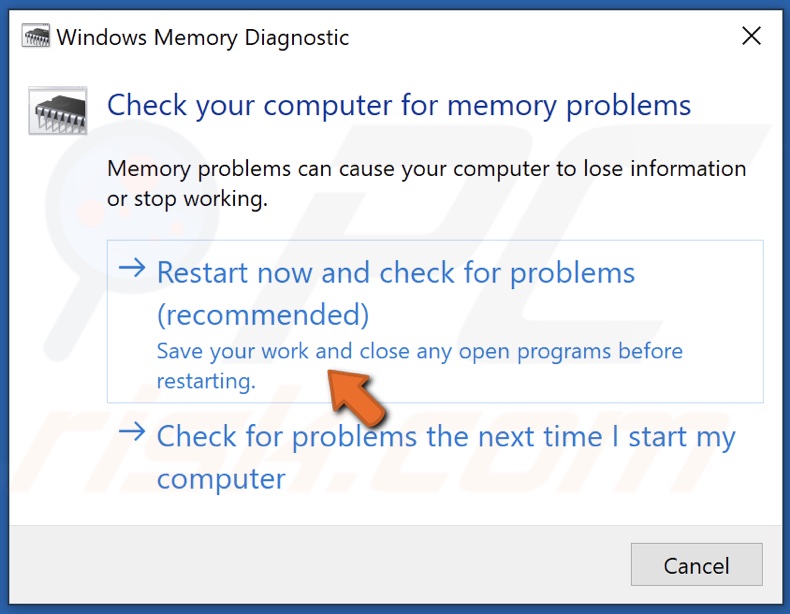
3. Click Restart now and check for problems (recommended).
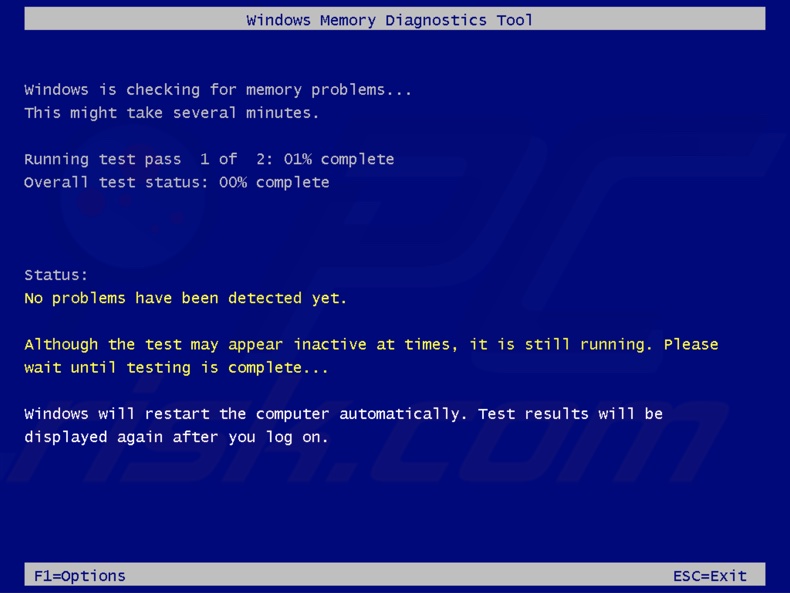
4. Press the F1 key to open advanced options.
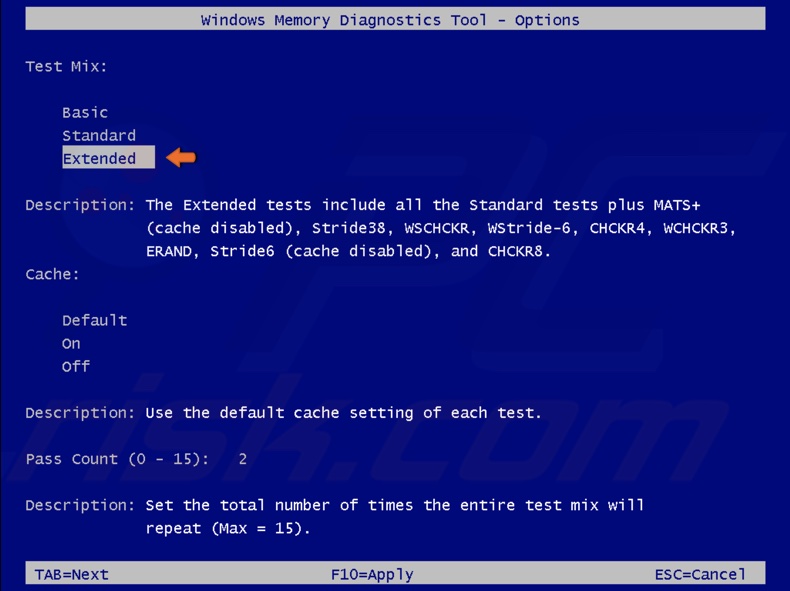
5. Select Extended using the arrow keys on your keyboard, and press F10.
6. The Windows Memory Diagnostics Tool will scan your (Random-access memory) RAM. The scan can’t fix your faulty RAM stick but will let you know if your RAM has problems.
7. If a RAM stick(s) is bad, remove it or replace it with a known good one.
8. The scan results will be shown once your PC boots up.
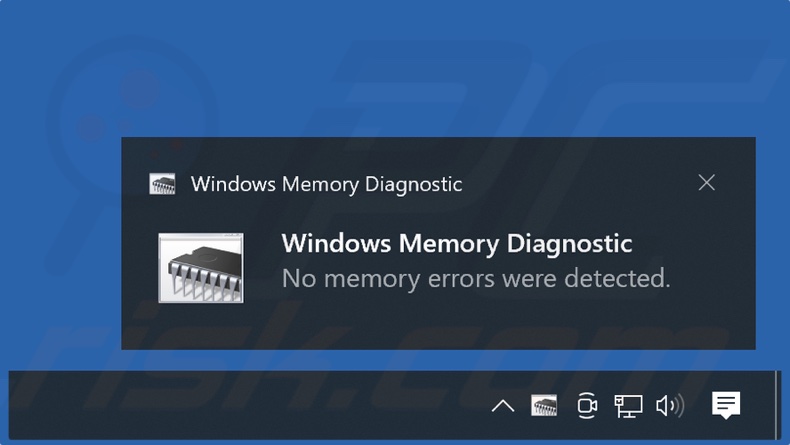
[Back to Table of Contents]
Solution 3. Run the Hardware and Devices Troubleshooter
1. Hold down Windows+R keys to open Run.
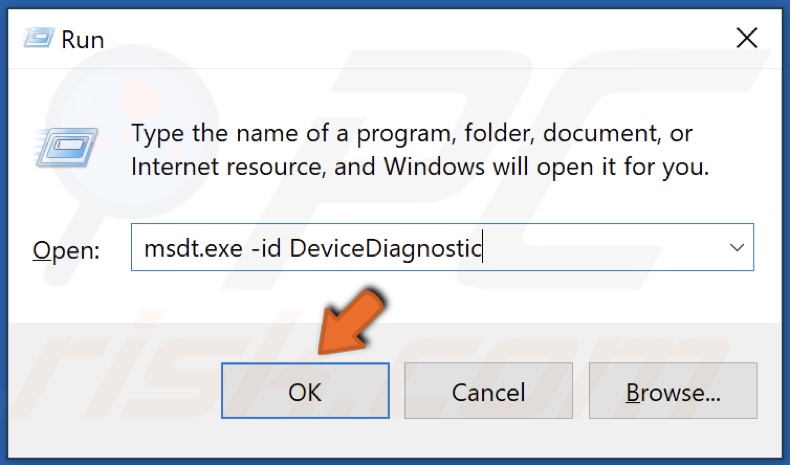
2. In the Run dialog box, type in msdt.exe -id DeviceDiagnostic and click OK.
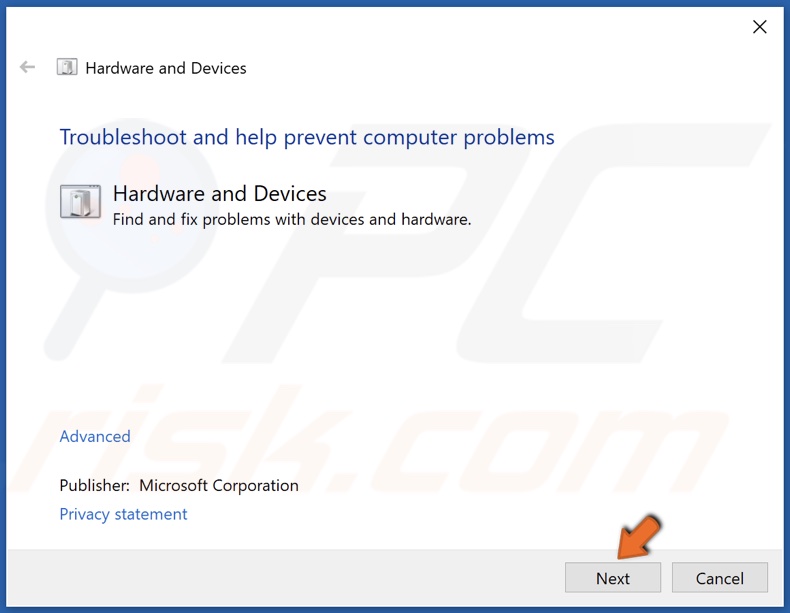
3. Then, click Next in the Hardware and Device troubleshooter window.
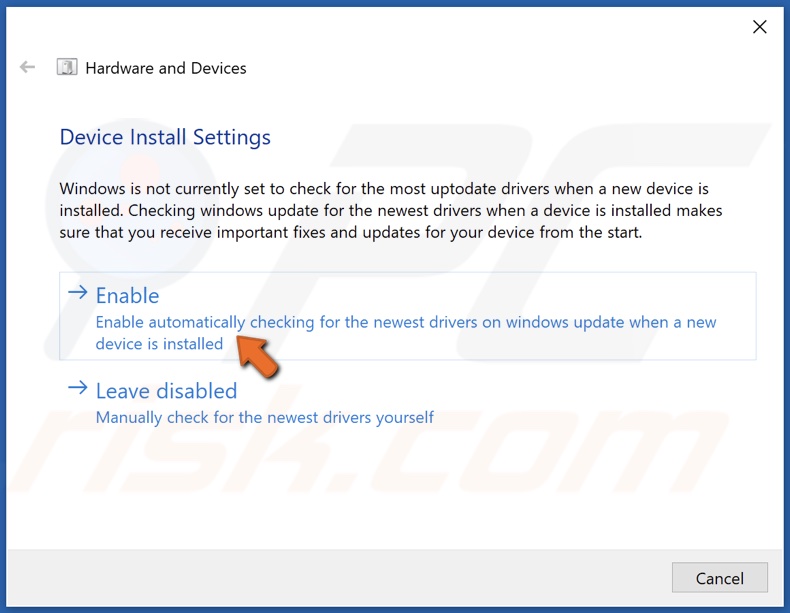
4. Apply the suggested fixes.
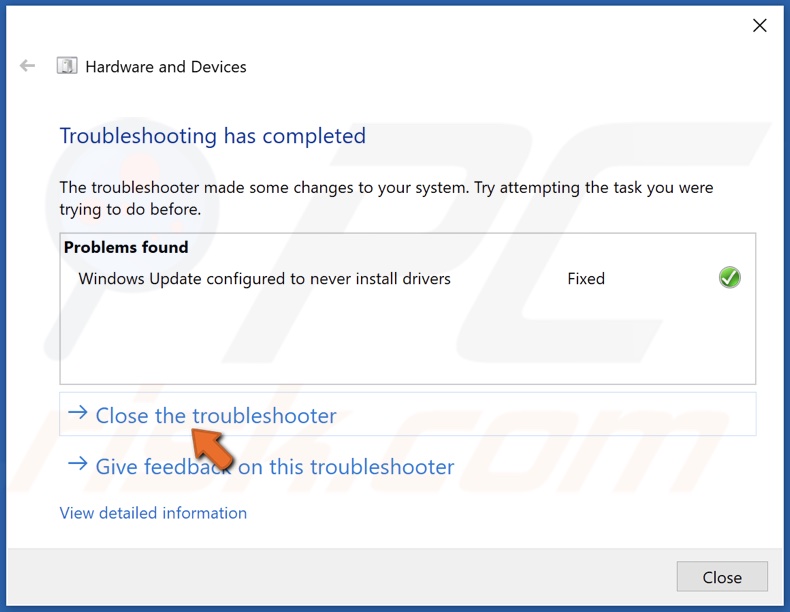
5. Click Close the troubleshooter.
[Back to Table of Contents]
Solution 4. Roll Back, Update or Uninstall Device Drivers
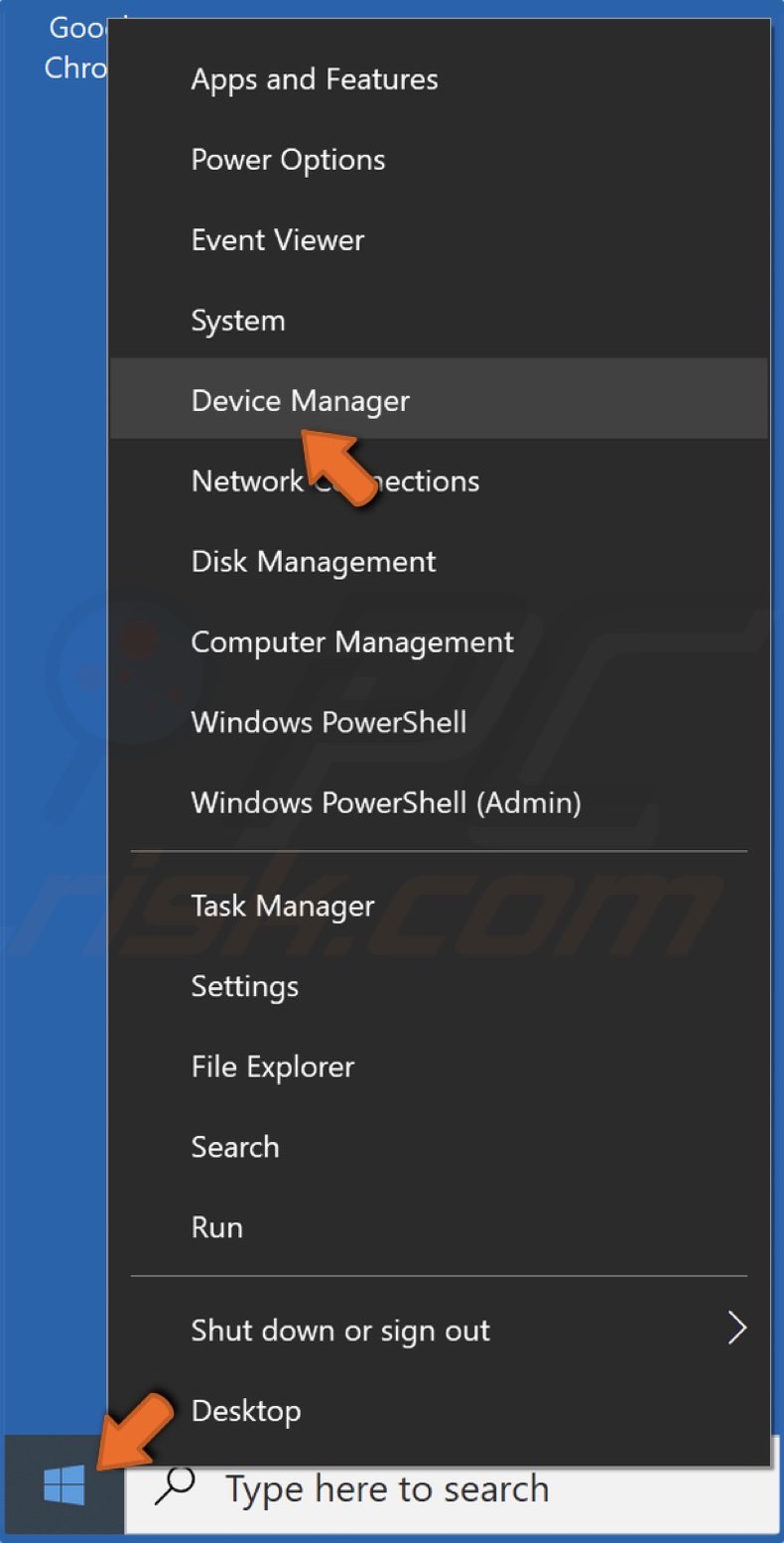
1. Right-click the Start button and select Device Manager.
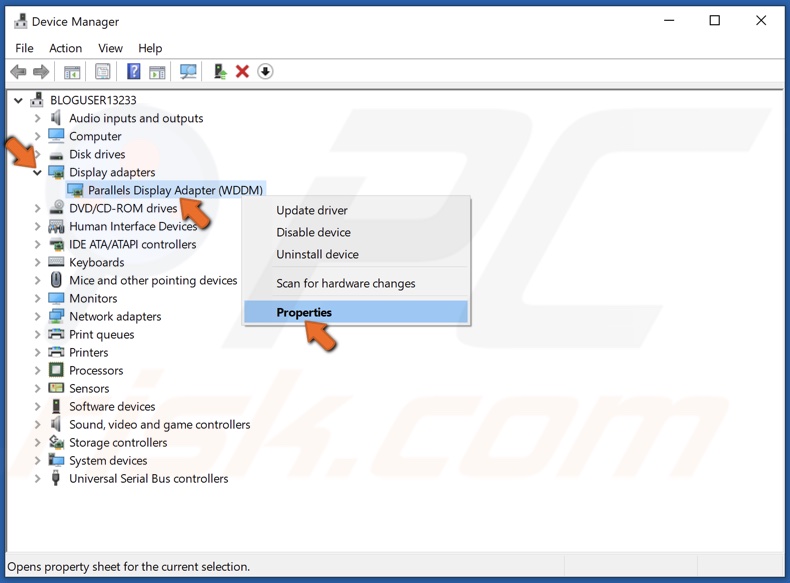
2. For the purposes of this article, we will use the display adapter. Expand the Display adapters list.
3. Select your display adapter (graphics card), right-click it, and click Properties.
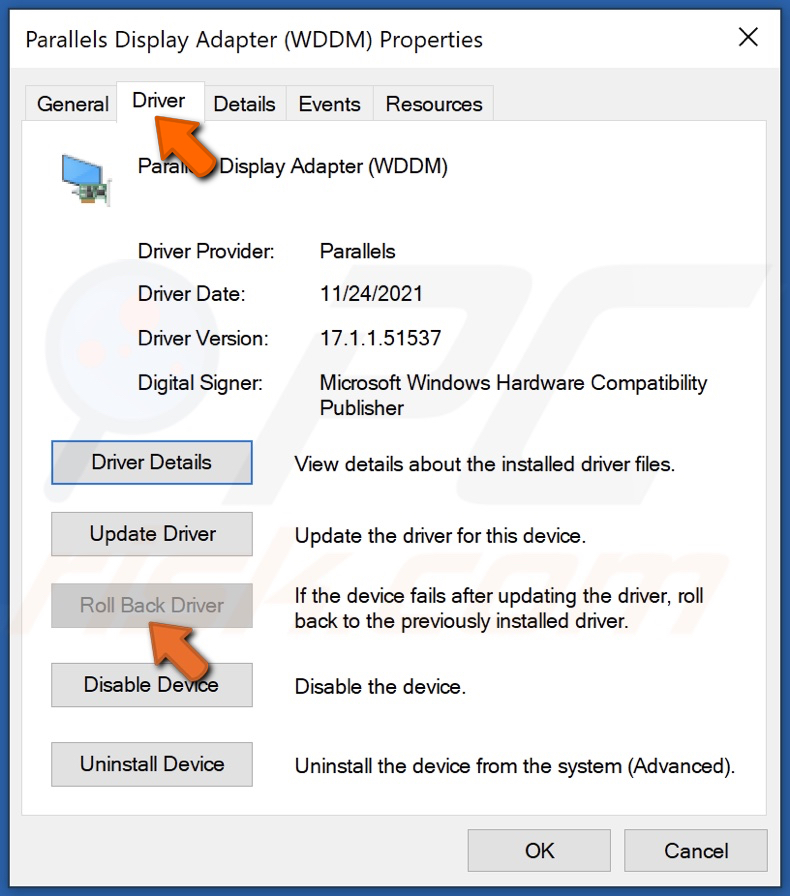
4. Select the Driver tab.
5. To go back to an older driver version, click Roll Back Driver.
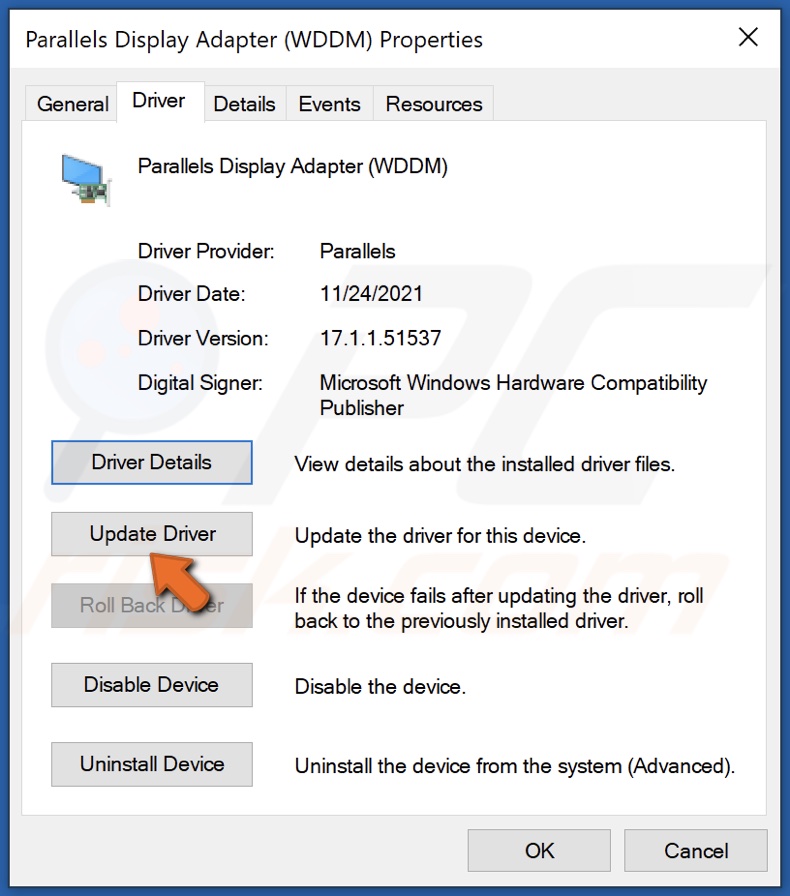
6. If rolling back the driver doesn’t fix the issue, click Update Driver.
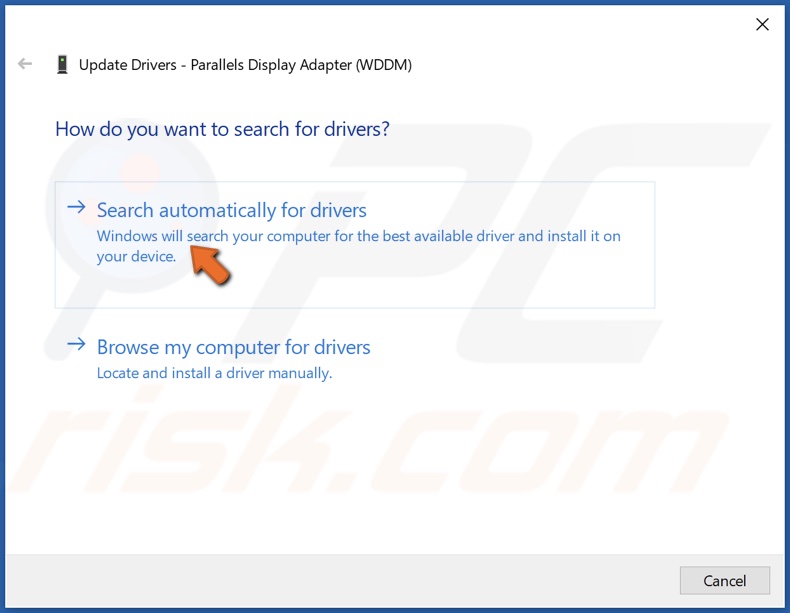
7. Select Search automatically for drivers.
8. Windows will download and install the drivers.
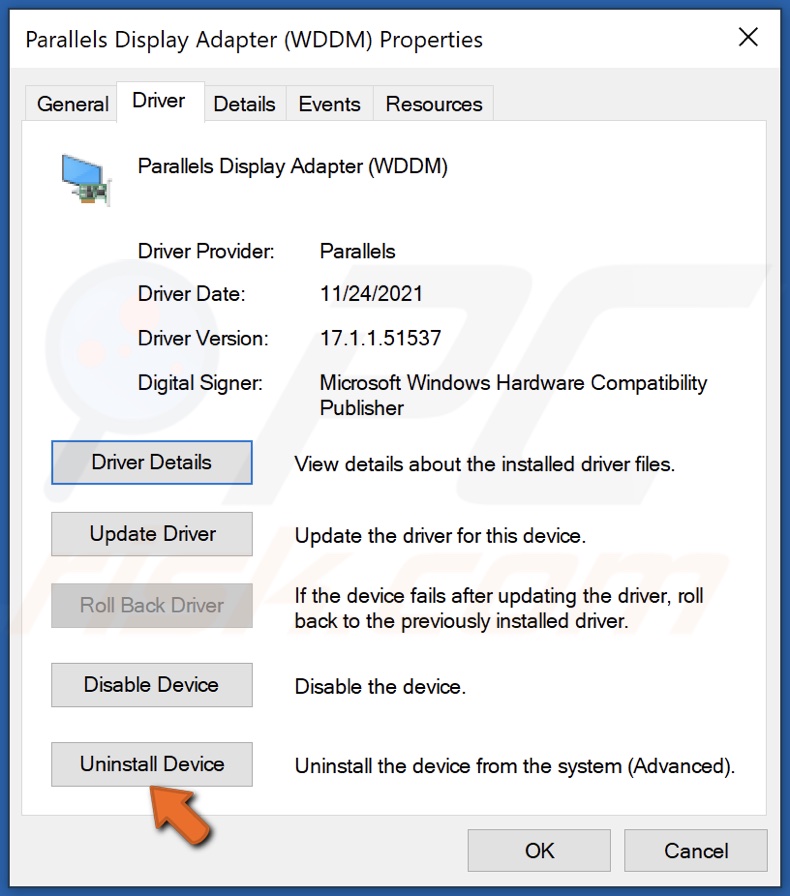
9. If you’re still experiencing the error, click Uninstall Device.
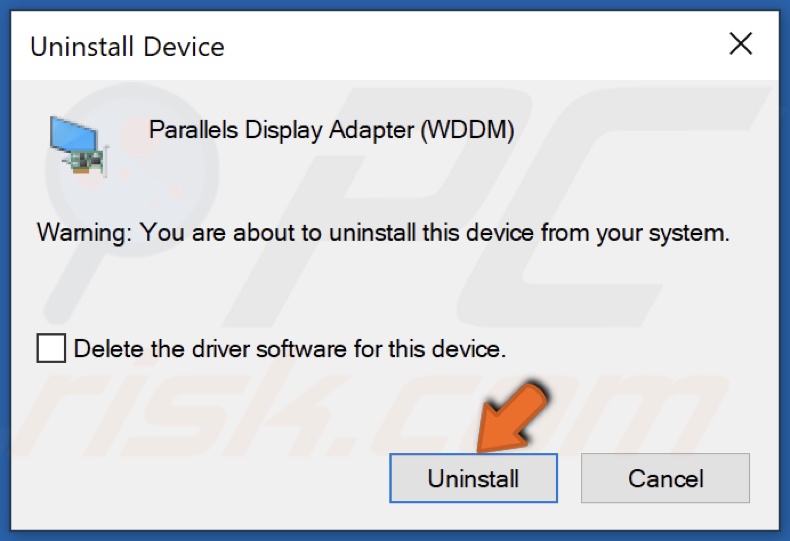
10. Click Uninstall to confirm the action.
11. Restart your PC, and Windows will automatically download the correct device driver once the computer boots up.
[Back to Table of Contents]
Solution 5. Run CHKDSK Scan
1. Hold down Windows+R keys to open Run.
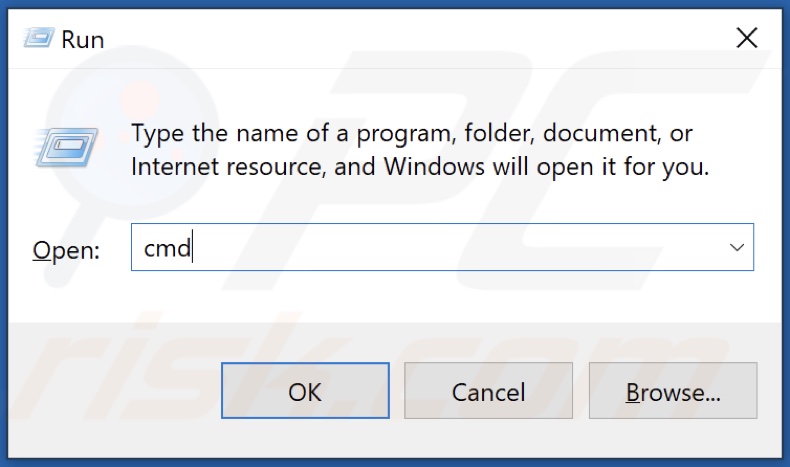
2. In the Run dialog box, type in CMD and hold down Ctrl+Shift+Enter keys to open the elevated Command Prompt.
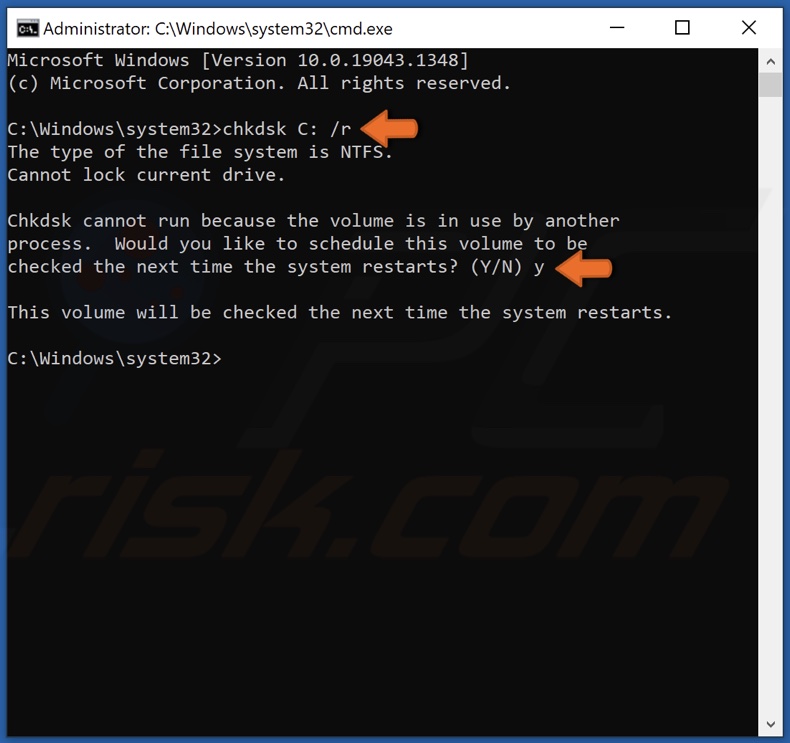
3. In the Command Prompt Window, type in chkdsk C: /r and hit Enter. Here, C is the system drive. If your system drive uses another letter, such as D, type in D instead of C.
4. Type in Y or Yes if that volume is being used by another process and hit Enter.
5. Then, close the Command Prompt and restart your PC. The scan will begin during the restart.
6. Wait for the scan to complete.
[Back to Table of Contents]
Solution 6. Run the Deployment Image & Servicing Management (DISM) Scan
1. Hold down Windows+R keys to open Run.

2. In the Run dialog box, type in CMD and hold down Ctrl+Shift+Enter keys to open the elevated Command Prompt.
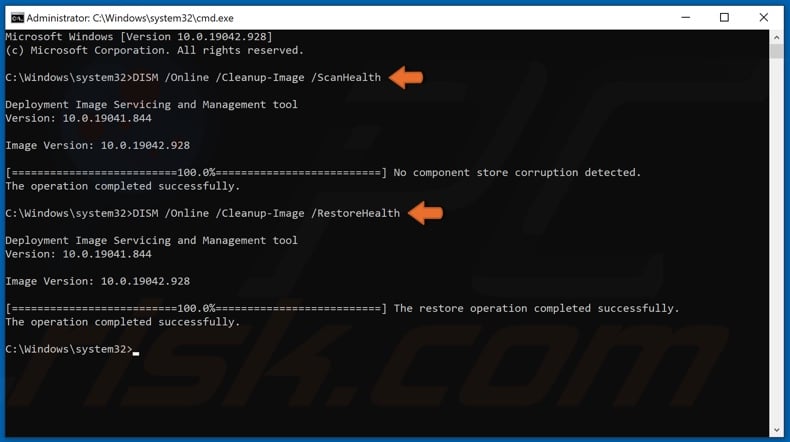
3. In the Command Prompt window, type in DISM /Online /Cleanup-Image /ScanHealth and hit Enter.
4. Then, type in the DISM /Online /Cleanup-Image /RestoreHealth and hit Enter.
5. Once the scan is complete, restart your PC.
[Back to Table of Contents]
Solution 7. Run the System File Checker (SFC) Scan
1. Hold down Windows+R keys to open Run.

2. In the Run dialog box, type in CMD and hold down Ctrl+Shift+Enter keys to open the elevated Command Prompt.
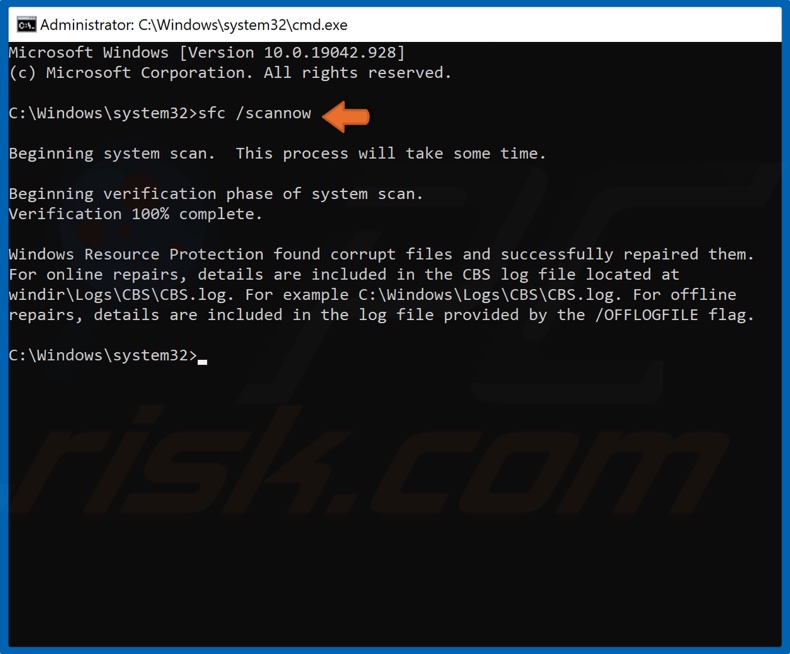
3. In the Command Prompt window, type in SFC /ScanNow and hit Enter.
4. Once the scan is complete, restart your PC.
[Back to Top]
DRIVER_IRQL_NOT_LESS_OR_EQUAL is an error that appears on a blue screen with the stop code 0x000000D1. This Windows error usually appears when your system’s built-in drivers, mostly network adapters, use an incorrect memory address while executing their task. Other than this, it also appears for many other reasons:
- 🚫Corrupted System Files
- 🖥️Faulty System Hardware & Software
- ❌RAM Issues
- 🛠️Antivirus Software
- 👿Viruses & Malware
- 😢Bugs & Glitches In the System
So, if you also get the DRIVER_IRQL_NOT_LESS_OR_EQUAL error on your Windows system, we’ve got you covered. This tutorial will explain how you can resolve the DRIVER_IRQL_NOT_LESS_OR_EQUAL error. So read ahead and learn to fix it.
| Workable Solutions | Step-by-step Troubleshooting |
|---|---|
| Method 1. Check Computer’s Hardware and Software | One of the most common causes of the DRIVER_IRQL_NOT_LESS_OR_EQUAL…Full steps |
| Method 2. Uninstall Network Drivers in Device Manager | Press the Windows + R keys simultaneously to open the Run program on your system…Full steps |
| Method 3. Update, Uninstall, or Reinstall Device Drivers | Open the Device Manager utility on your Windows system using your preferred method…Full steps |
| Method 4. Use the Scannow Command To Repair Driver | Press the Windows key to open the search box and type the command prompt in it…Full steps |
| More Methods to Fix DRIVER_IRQL_NOT_LESS_OR_EQUAL | Open Windows Search using the Windows + S keys and type in Memory Diagnostic…Full steps |
Recover Data When Encounter DRIVER_IRQL_NOT_LESS_OR_EQUAL
DRIVER_IRQL_NOT_LESS_OR_EQUAL error is a critical BSOD error that can result in data loss. Or you may encounter other BSOD errors like Windows stop code 0xC000021A. If this happens to you due to this error, and you want to get all your data back into your Windows PC, then you can take the help of EaseUS Data Recovery Wizard.
EaseUS Data Recovery Wizard enables you to recover deleted files from Windows 10 or 11 due to accidentally deleting, formatting the wrong partition, sudden system crash, malware attack, etc., from your PC. The highlighting part about this is that it can recover all file types, like images, documents, videos, audio, archives, emails, etc. You can also recover data from a hard drive that won’t boot.
If your images and videos get corrupted while troubleshooting this BSOD error, you can easily use EaseUS Data Recovery Wizard to repair them. So, check the below-mentioned instructions to learn to recover lost or deleted files using our tool:
Step 1: Install and Launch EaseUS Data Recovery Wizard
Download and install the recovery software from the EaseUS official website, then open it on your computer or laptop.
Step 2: Scan and Select Deleted Files
Choose the hard drive or partition where the deleted files located and click «Search for Lost Data». After scanning, preview and select the deleted files you want to recover.
Step 3: Choose Location and Recover Deleted Files
Click «Recover» and choose a location to save the files (preferably on a different drive), and click «OK.» Check the recovered files in the chosen folder.You can choose a cloud storage, such as OneDrive, Google Drive, etc., and click «Save» to save your recovered files.
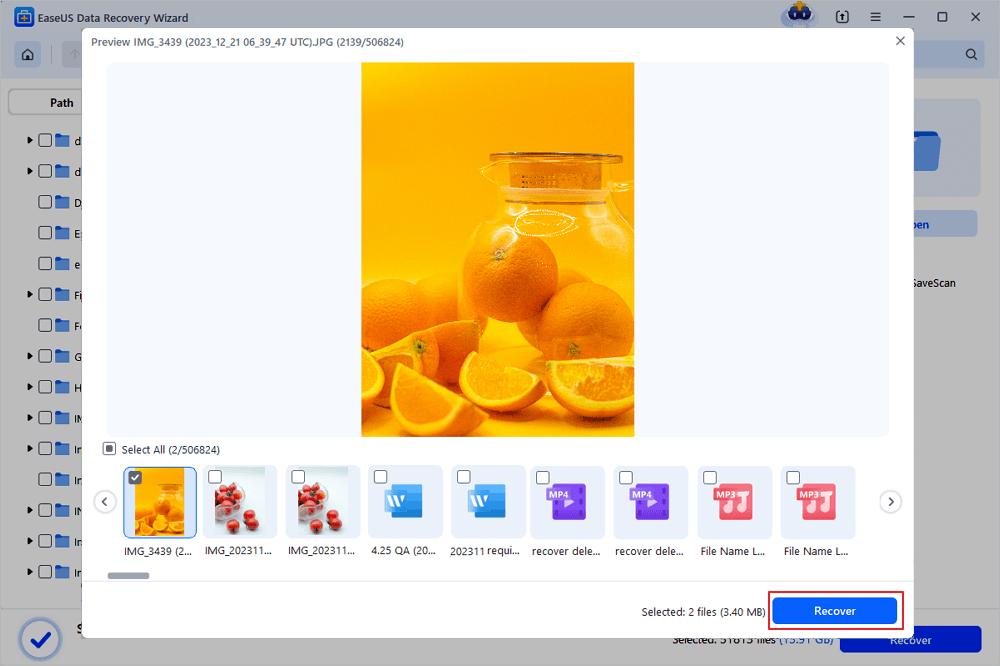
Don’t forget to share this page on your social media so you can easily find this page!
Here are some working fixes to fix the DRIVER_IRQL_NOT_LESS_OR_EQUAL error in Windows. You can check the detailed tutorial of each method:

Method 1. Check Computer’s Hardware and Software
One of the most common causes of the DRIVER_IRQL_NOT_LESS_OR_EQUAL error is the issues with the computer’s hardware and programs installed on it. So, we suggest you check your system’s RAM sticks to ensure they’re in perfect condition and properly connected. You can also try cleaning the RAM Sticks using a dry cloth with gentle hands.
Also, unplug all the connected external devices, like USB drives, hard drives, printers, etc., and restart your system to check if an external device is causing it.
If you started getting this BSOD error after installing a program on your system, ensure it’s compatible with your current Windows 11/10 system. If you aren’t unsure about it, uninstall it.

Method 2. Uninstall Network Drivers in Device Manager
As outdated network drivers could also be the reason for this BSOD error, we suggest you reinstall them. Doing so will eliminate bugs and glitches with the network drivers and the error. We’ve mentioned the step to uninstall network drivers in Windows 11/10 below:
Step 1. Press the Windows + R keys simultaneously to open the Run program on your system.
Step 2. Type devmgmt.msc in Run’s search and press Enter to open Windows Device Manager.

Step 3. Expand the Network Adapters section in the Device Manager program by double-clicking on it.
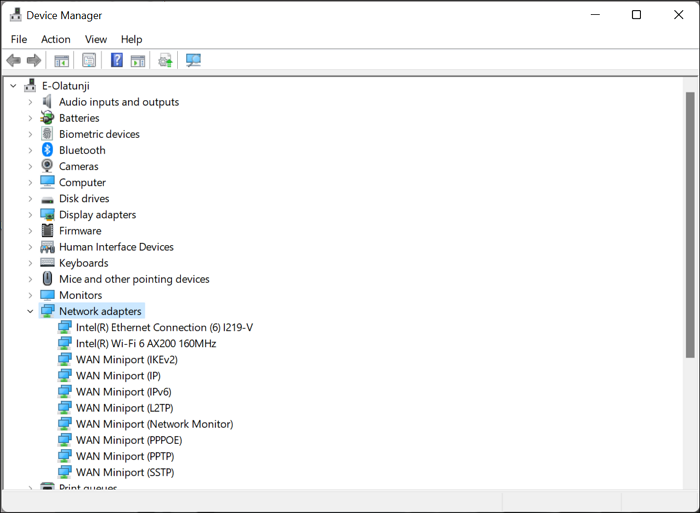
Step 4. Right-click on the network adapter in the Network Adapters section.
Step 5. Select «Uninstall device» from the menu to uninstall it from the system.

Step 6. Press the Alt + F4 keys, select the «Restart» option in the Shut Down Windows prompt, and press Enter to restart Windows 11/10 and reinstall the driver.

Method 3. Update, Uninstall, or Reinstall Device Drivers
The DRIVER_IRQL_NOT_LESS_OR_EQUAL error also appears because of issues with the system driver. To check whether a system driver is causing this issue in your case, we suggest you update and reinstall all your system drivers. So try the same by following the below-mentioned steps:
Update the Driver:
Step 1. Open the Device Manager utility on your Windows system using your preferred method.
Step 2. Expand any section in Device Manager and right-click on any driver.
Step 3. Choose «Update driver« from the popup menu and select «Search automatically for drivers» in the next window.

Step 4. Let the system search for new updates for the driver, and hopefully, the issue will get fixed.

Reinstall the Driver:
Step 1. Right-click on the system driver, and choose the «Uninstall device» option from the right-click menu.
Step 2. Once it’s uninstalled, click «Action» in the top menu, and select the «Scan for hardware changes» option from the dropdown to reinstall it on the system.

Method 4. Use the Scannow Command To Repair Driver
It could be possible that your Windows system’s critical files have been corrupted, which is why this BSOD error appears on the system. In that case, we suggest you run the SFC Scannow command to repair Windows 11 and all the corrupted system files. You can do the same by following the below-mentioned instructions:
Step 1. Press the Windows key to open the search box and type the command prompt in it.
Step 2. Select the «Run as administrator» option from the search results to open it with admin privileges.

Step 3. Type the sfc /scannow command in the console to start the SFC scan.

Step 4. Wait for the SFC scan to finish. Once completed, restart your system and check the issue’s status. You can learn more about repairing drive errors by reading the following passage:
Fixed: Restart to Repair Drive Errors on Windows 10
Have you ever encountered the Restart to repair drive errors on Windows 10 or Windows 11? Read more >>
Method 5. Fix Driver Errors With Windows Memory Diagnostic Tool
The DRIVER_IRQL_NOT_LESS_OR_EQUAL error also appears because of system RAM or memory errors. In that case, we suggest you use the Windows Memory Diagnostic tool to repair all the errors with your RAM and check if doing so fixes the issue.
So check the below-listed instructions to run the Memory Diagnostic tool on your Windows PC:
Step 1. Open Windows Search using the Windows + S keys and type in Memory Diagnostic.
Step 2. Select «Windows Memory Diagnostic» from the Best Match section in the results to open it.

Step 3. Click on «Restart now and check for problems» in the Windows Memory Diagnostic window.
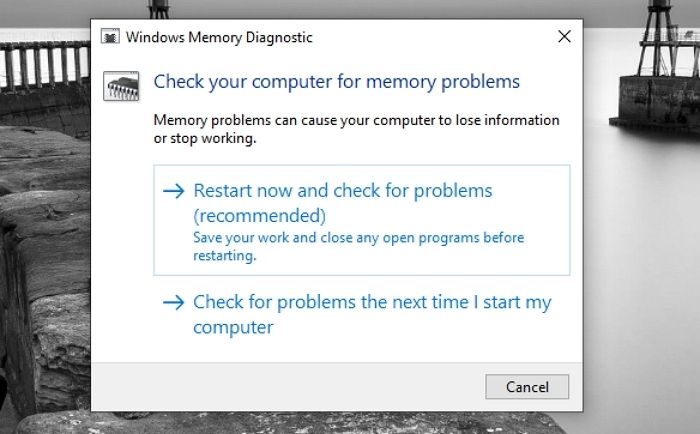
Step 4. After doing so, your system will restart, and two scans will start with the intent to fix issues with RAM.
Method 6. Remove Computer Viruses and Malware
Another effective way to fix this BSOD error is to run a quick virus scan on your Windows PC. This is because Malware and viruses in the system can also cause this BSOD error. You can try the below prompts to run a quick virus scan on your Windows PC:
Step 1. Open the Windows Search Box, type in Virus & threat protection, and select it from the results.
Step 2. On the next window, click the «Quick Scan» button to start a virus scan to search for malicious files.

Step 3. Once the scan is completed, check if it found any suspicious files on your system. If yes, follow the on-screen prompts to remove them from the system. You can learn more about how to remove viruses without antivirus software by reading the following article:
Delete and Remove Virus Without Antivirus
This tutorial shows how to remove viruses from laptop viruses. You can remove viruses without running antivirus software. Read more >>
Method 7. Update Your Windows OS
Microsoft suggests its users update their Windows 11/10 PC or laptop to avoid these BSOD errors. Thus we suggest you check whether your system is up-to-date. If it isn’t, update it to fix all the bugs in the system. By the way, you should back up essential data first. If you lost data without any backup, EaseUS Data Recovery Wizard could recover lost files after Windows 11 update.
So do the same by trying the below steps:
Step 1. Open the Settings app on your system and go to the Windows Update section from the left menu.
Step 2. Click the «Check for updates» button at the top to search for new updates for your current OS build.
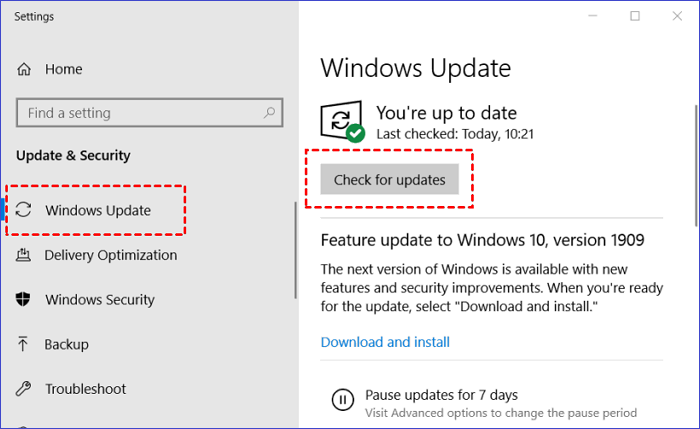
Step 3. If it finds some new updates to install, click the «Download and Install all» button to install them.
Step 4. Once done, click on «Advanced options» under More Options.

Step 5. Click on «Optional updates» in the «Additional Options» section to view the optional updates.

Step 6. Look for the driver-related updates in the Driver Updates section and tick the boxes next to them.
Step 7. Click the «Download and Install» button to download and install all the optional updates.

Once done, restart your system and check if the DRIVER_IRQL_NOT_LESS_OR_EQUAL error is gone. You can share this page with more users to help them solve this problem.
Method 8. Use Windows Get Help Utility
Windows has an integrated Get Help app that lets you find solutions to your Windows problems. If the issue persists, we suggest you use your PC’s built-in Get Help app to fix DRIVER_IRQL_NOT_LESS_OR_EQUAL. You can follow the below-mentioned prompts to know how to resolve it on your system using the Get Help app:
Step 1. Open the Get Help app using the Windows Search Box on your Windows system.
Step 2. Type Troubleshoot BSOD error in the Get Help app’s search box and press Enter.
Step 3. You need to answer now the questions asked to get the resolution for this error.

Method 9. Use System Restore
If you’re still getting the DRIVER_IRQL_NOT_LESS_OR_EQUAL error on your PC, you can try to restore computer to an earlier date. So if you already have a system restore point created, follow the below-mentioned steps to go back to it and fix the issue:
Step 1. Open the Windows Search Box, type «create a restore point» in it, and click on it in the results.
Step 2. Click the «System Restore…« button under «System Restore» and click the Next > button.
Step 3. Select the restore point to which you want to revert your system and click on the Next > option.
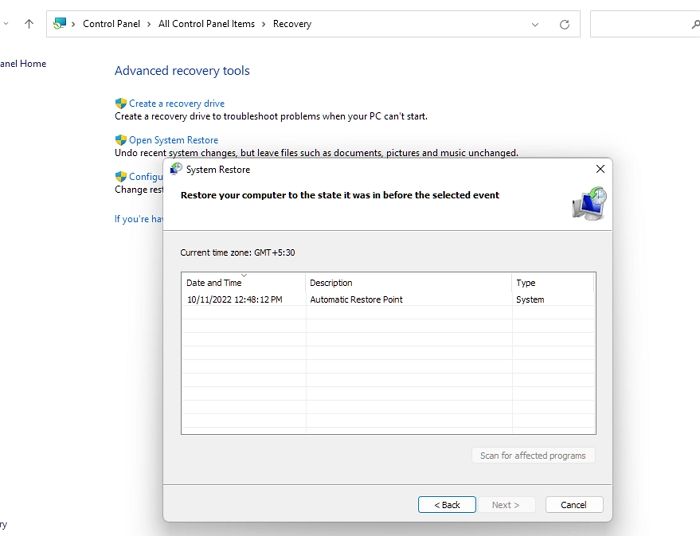
Step 4. Click the Finish button to return your PC to the selected system restore point.
Check the following passage to fix system restore initializing issues on Windows:
6 Ways to Fix System Restore Is Initializing in Windows 11/10
Sometimes, System Restore may get stuck and show System Restore is Initializing on the screen when you try to restore files for your computer. Read more >>
Method 10. Factory Reset Your Windows OS
The last thing you can do to fix the DRIVER_IRQL_NOT_LESS_OR_EQUAL error is to reset the system. Doing so will revert your system’s settings to default.
Also, you need to delete all the data from your system to make sure nothing is there on your system that can cause this issue. So follow the mentioned steps to reset your PC:
Step 1. Open the Settings app on your Windows 11 PC and go to the Recovery section of it.
Step 2. Click the Reset PC button under the Recovery options section in the Recovery window.

Step 3. Select the «Remove everything» option in the Choose an option window and click on Cloud download.

Step 4. You need to follow now the on-screen steps to reset your system.
If you want to recover lost files after Windows factory reset, you can check this page:
How to Recover Files After Factory Reset Windows 10/11
How to recover files after factory reset Windows 10? You can recover files after factory reset on Windows 10 or Windows 11. Read more >>
Summary
You’re working peacefully on your system, a sudden system crash happens, and the DRIVER_IRQL_NOT_LESS_OR_EQUAL error appears on the screen. We know how irritating it can be to get this error while working. We shared several working solutions in this troubleshooting guide to fix this error.
We hope this guide helped you fix the error without losing any data. If you lost some of your stored data during troubleshooting, consider using EaseUS Data Recovery Wizard to recover it.
DRIVER_IRQL_NOT_LESS_OR_EQUAL FAQs
Many people get different questions about the DRIVER_IRQL_NOT_LESS_OR_EQUAL error on Windows. Thus, we’ve answered some commonly asked questions about this error in this section. Read the mentioned questions and learn more about this BSOD error in detail:
1. How to fix the Kernel Mode Heap Corruption error?
An easy way to fix the Kernel Mode Heap Corruption error is to repair corrupted system files by running the SFC scan in the console. You can also try fixing this error by updating all the system drivers to the latest build to eliminate all the bugs and glitches.
2. What does DRIVER_IRQL_NOT_LESS_OR_EQUAL mean?
DRIVER_IRQL_NOT_LESS_OR_EQUAL means there’s something wrong with your system’s drivers, especially network adapters, RAM issues, faulty hardware, antivirus app, etc. Fortunately, troubleshooting can fix it, like updating and reinstalling network drivers.
3. How to fix DRIVER_IRQL_NOT_LESS_OR_EQUAL on Windows 11?
One of the effective workarounds to fix DRIVER_IRQL_NOT_LESS_OR_EQUAL on Windows 11 is to reinstall and update the system’s network adapters. You can also try running an SFC scan on your Windows PC, as corrupted system files could cause this error.
4. Can I recover data from a BSOD computer?
You can recover data from a BSOD-affected Windows computer using a third-party data recovery tool. Plenty of excellent data recovery tools let you do the same. You can recover all file types, like images, videos, documents, audio, archives, and other files, with EaseUS Data Recovery Wizard.


